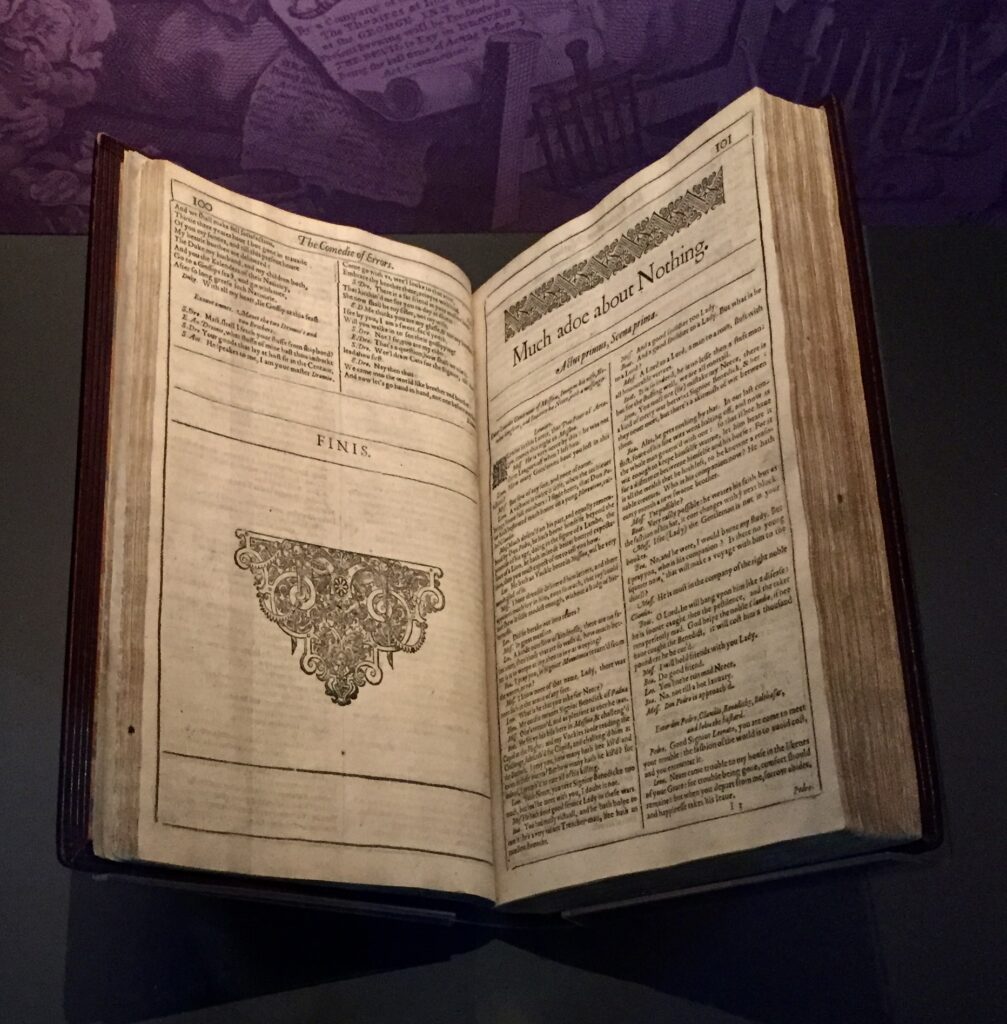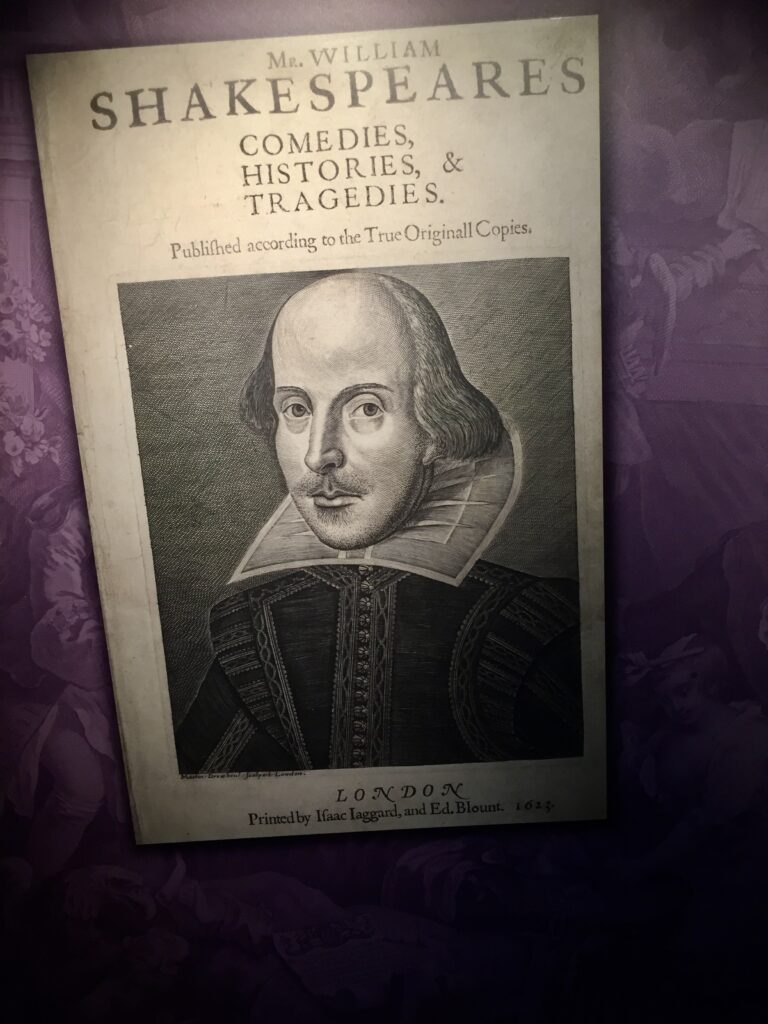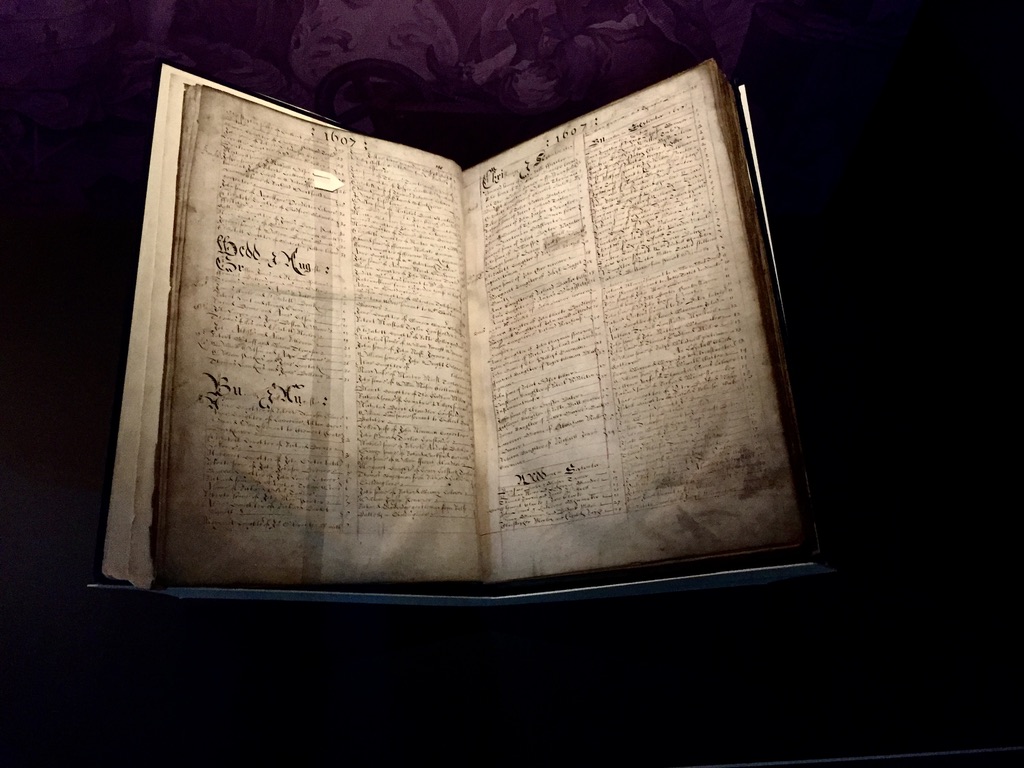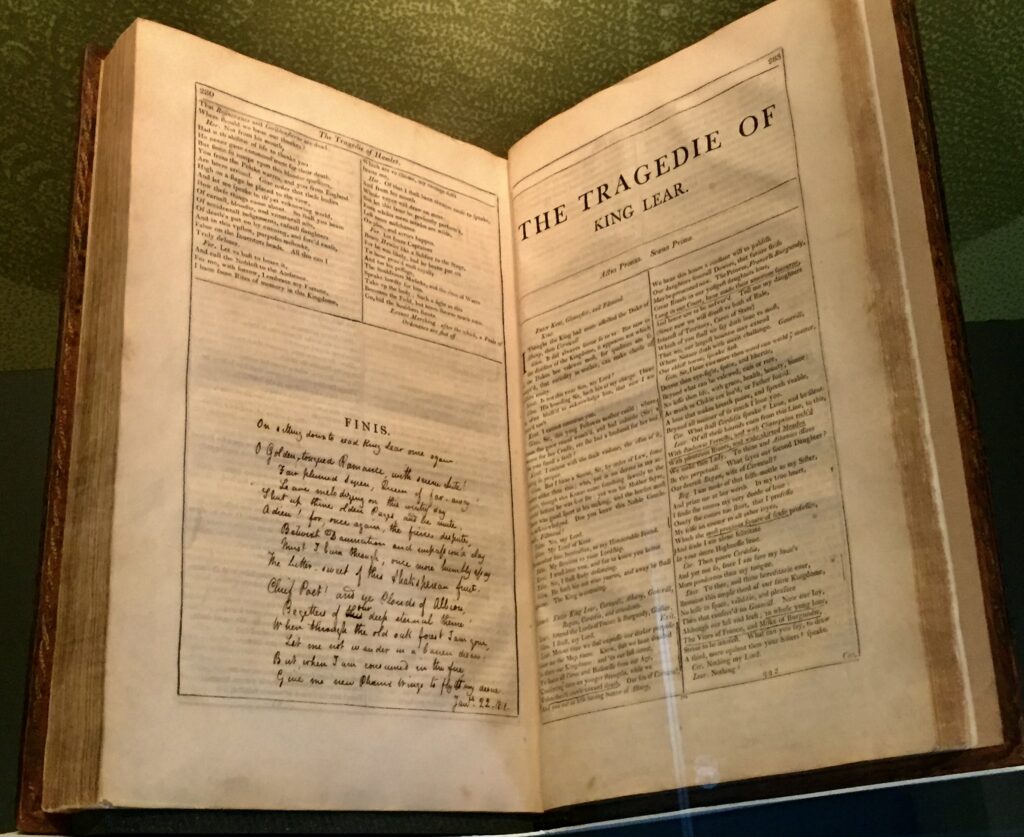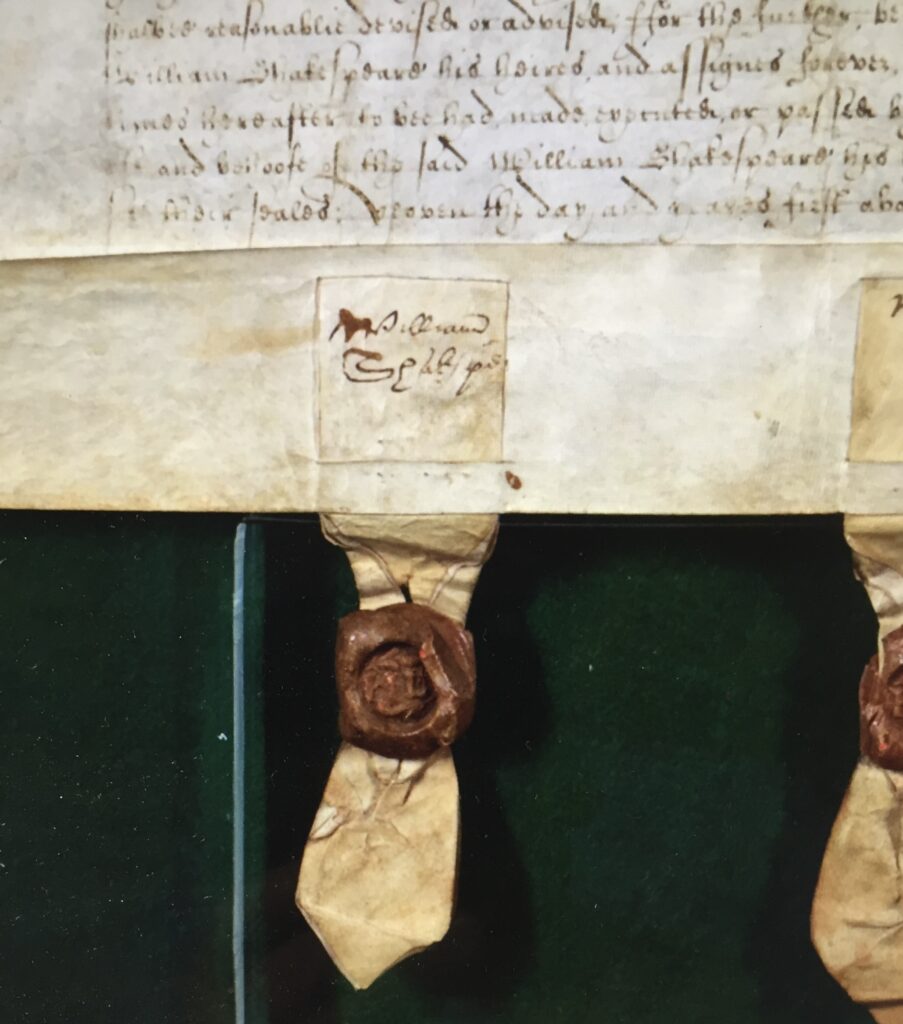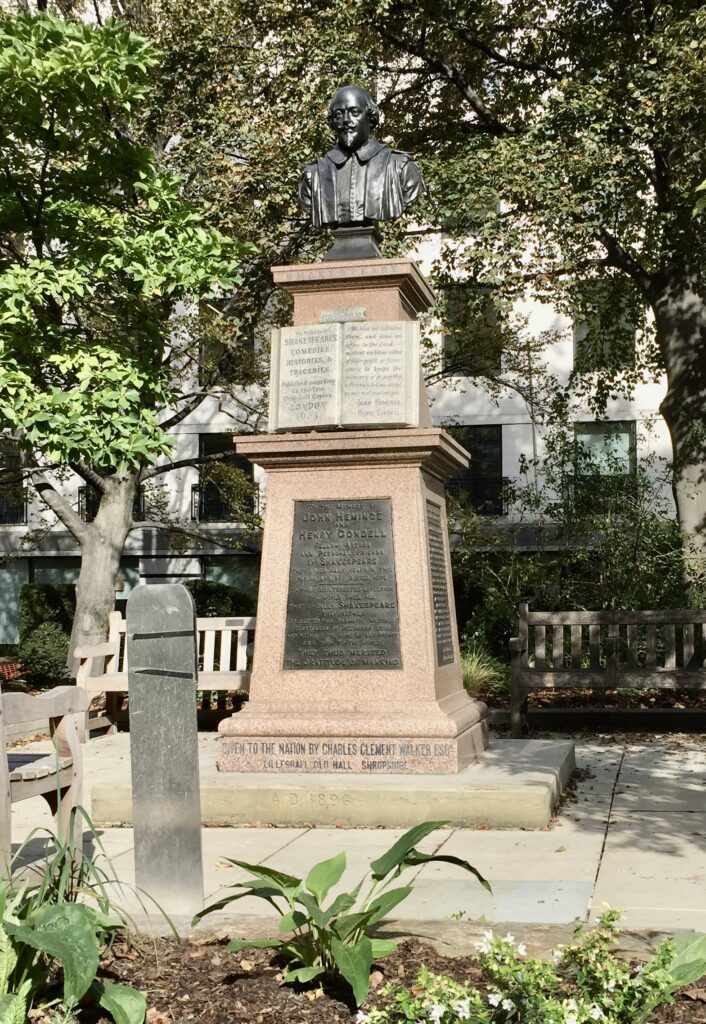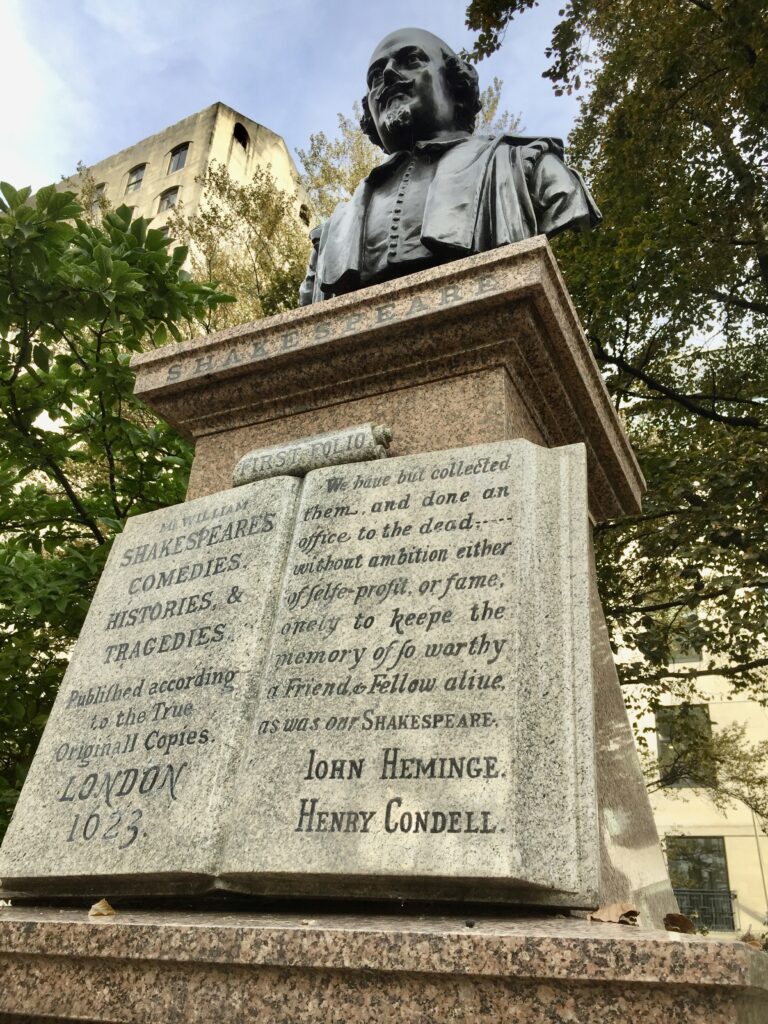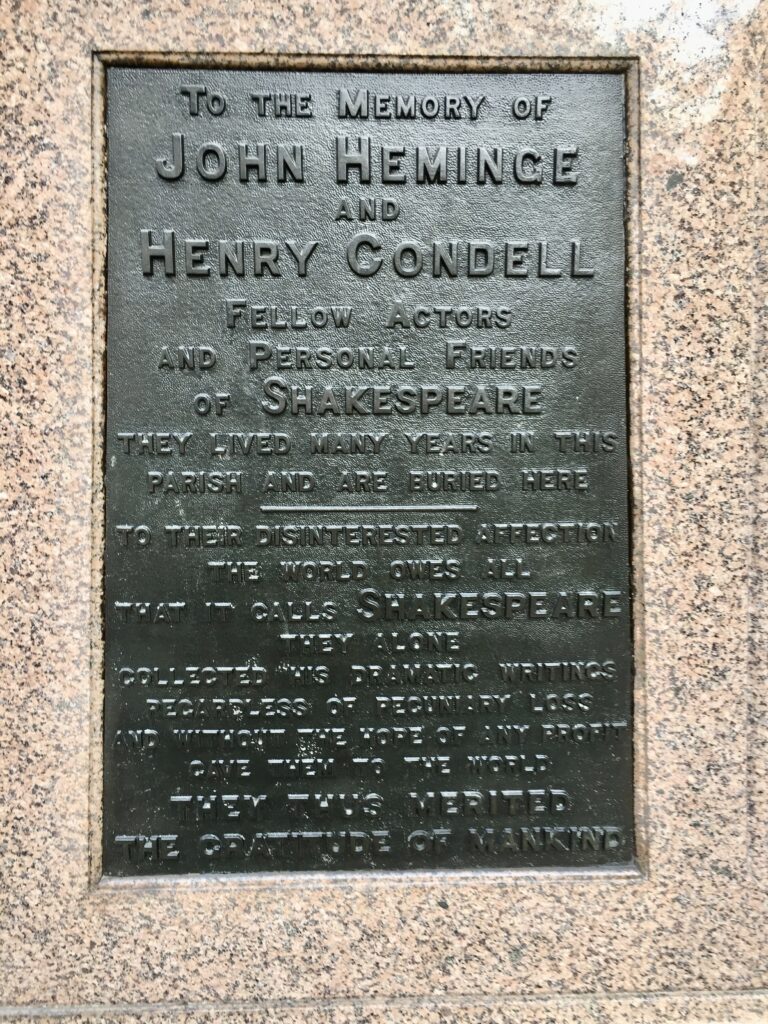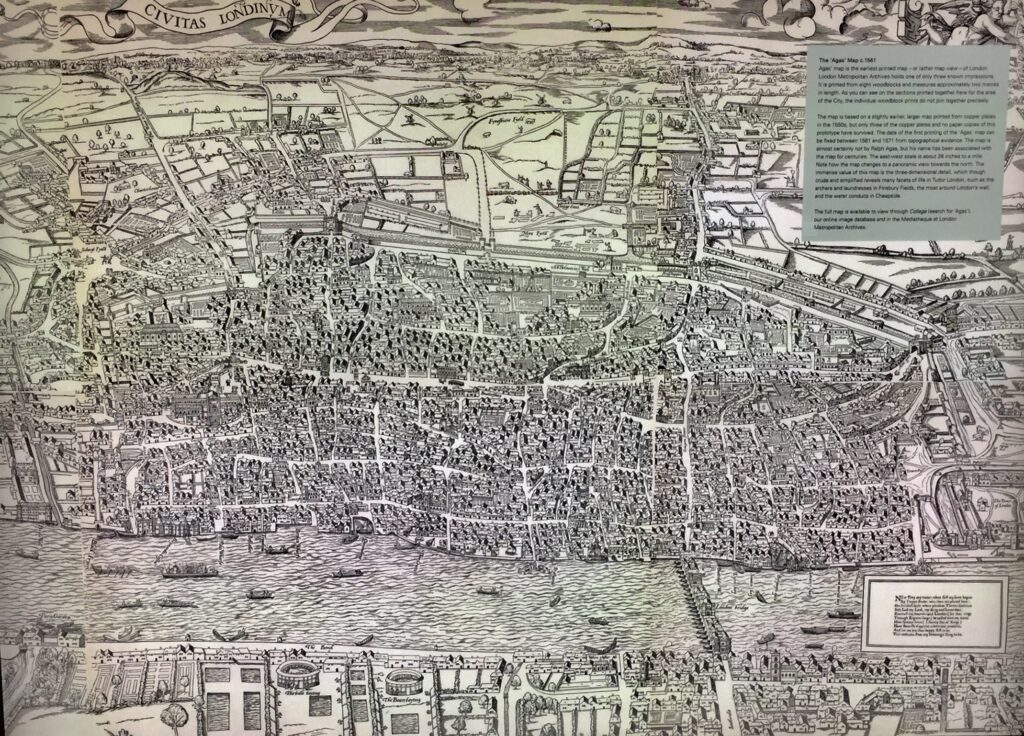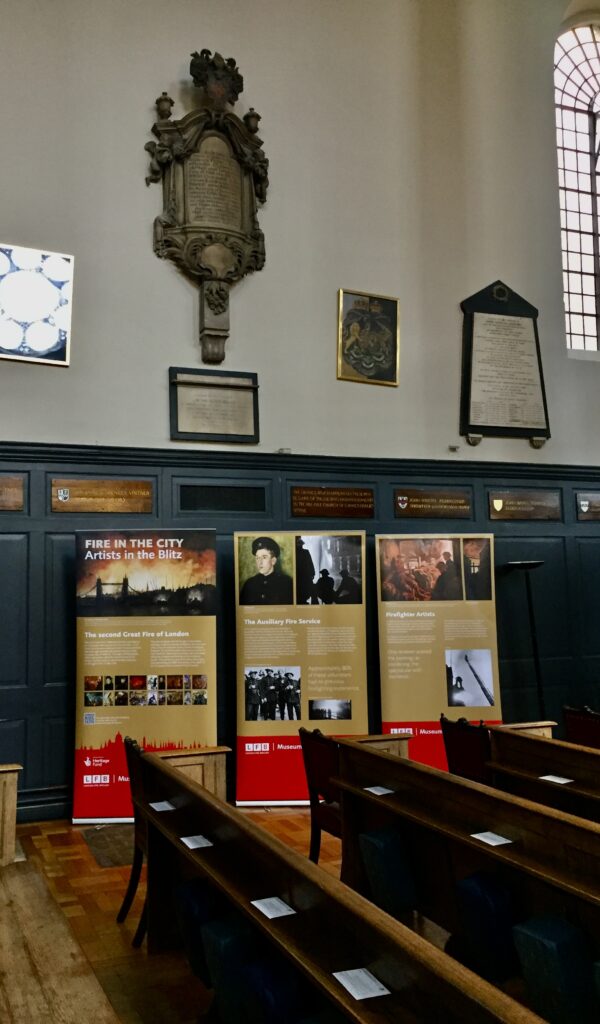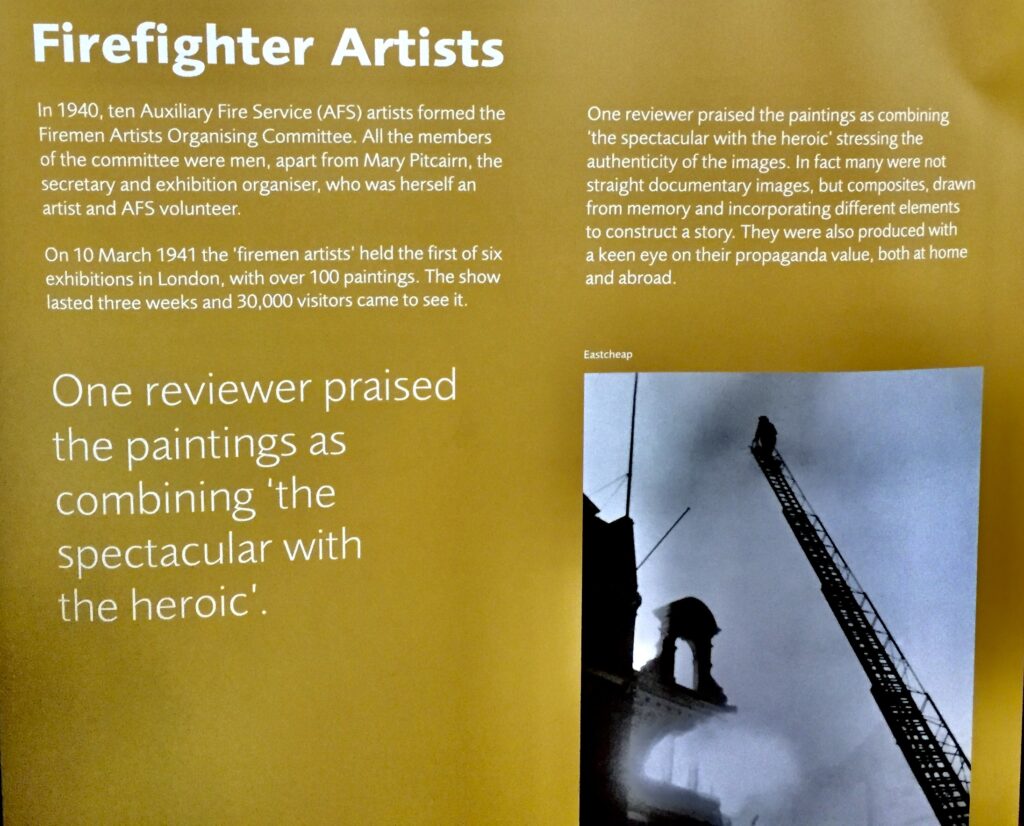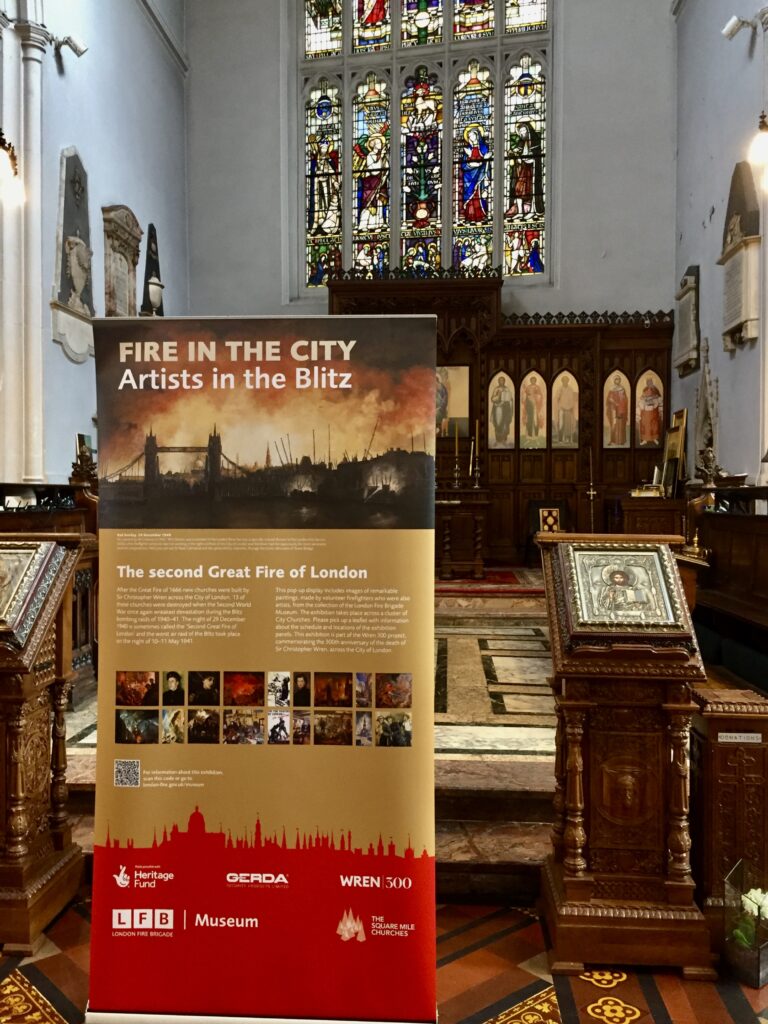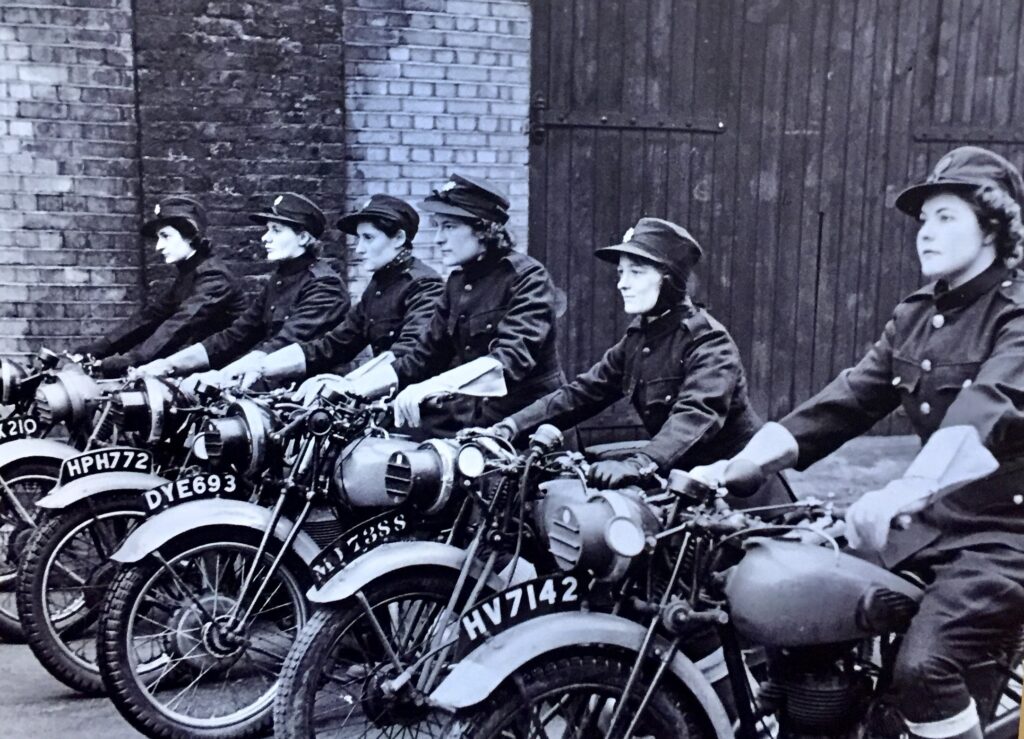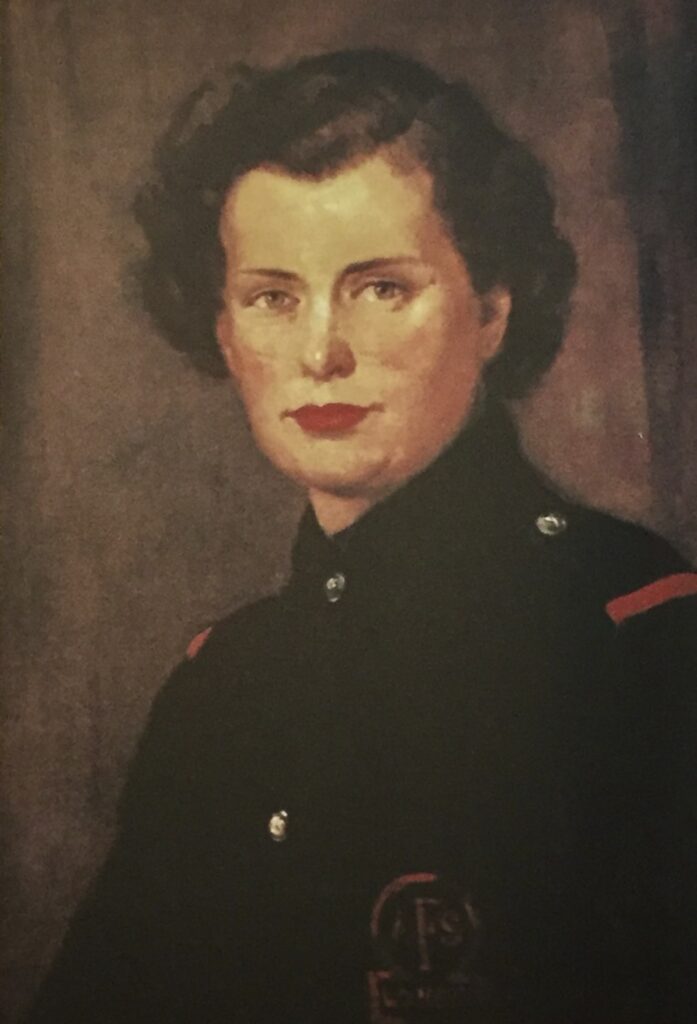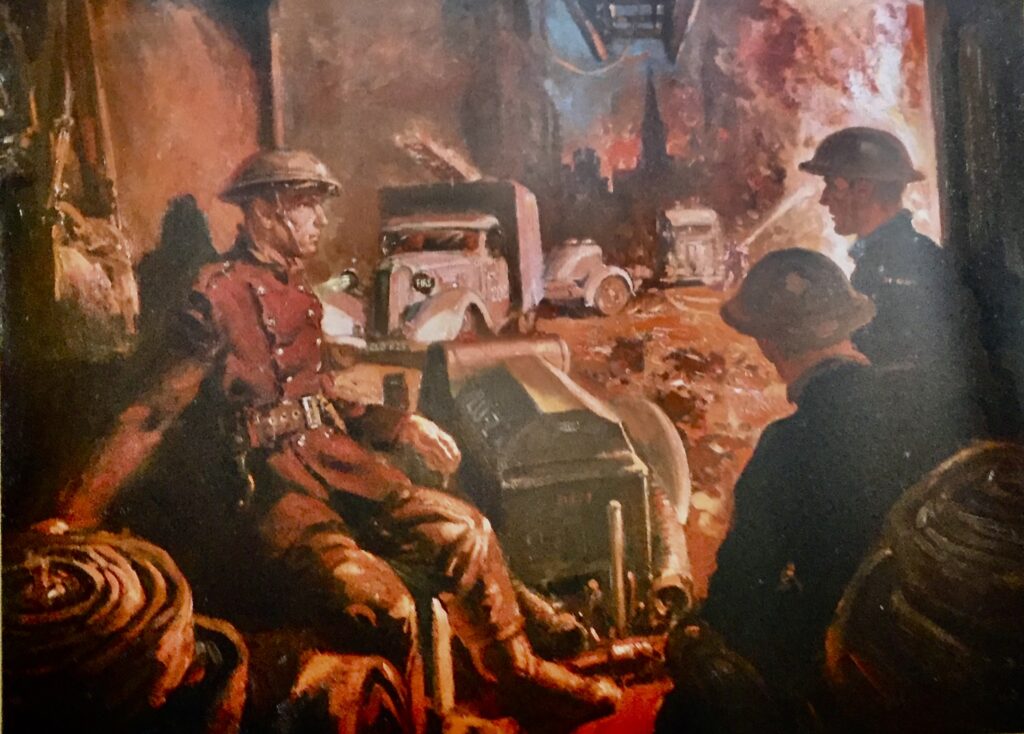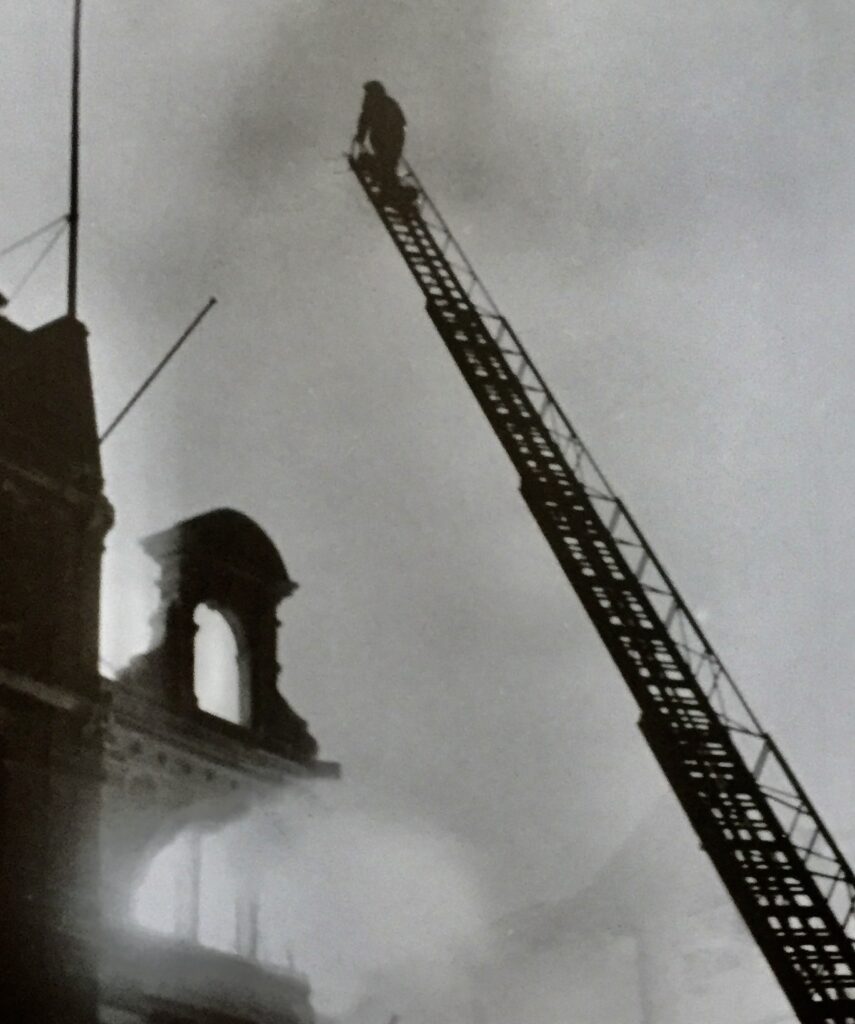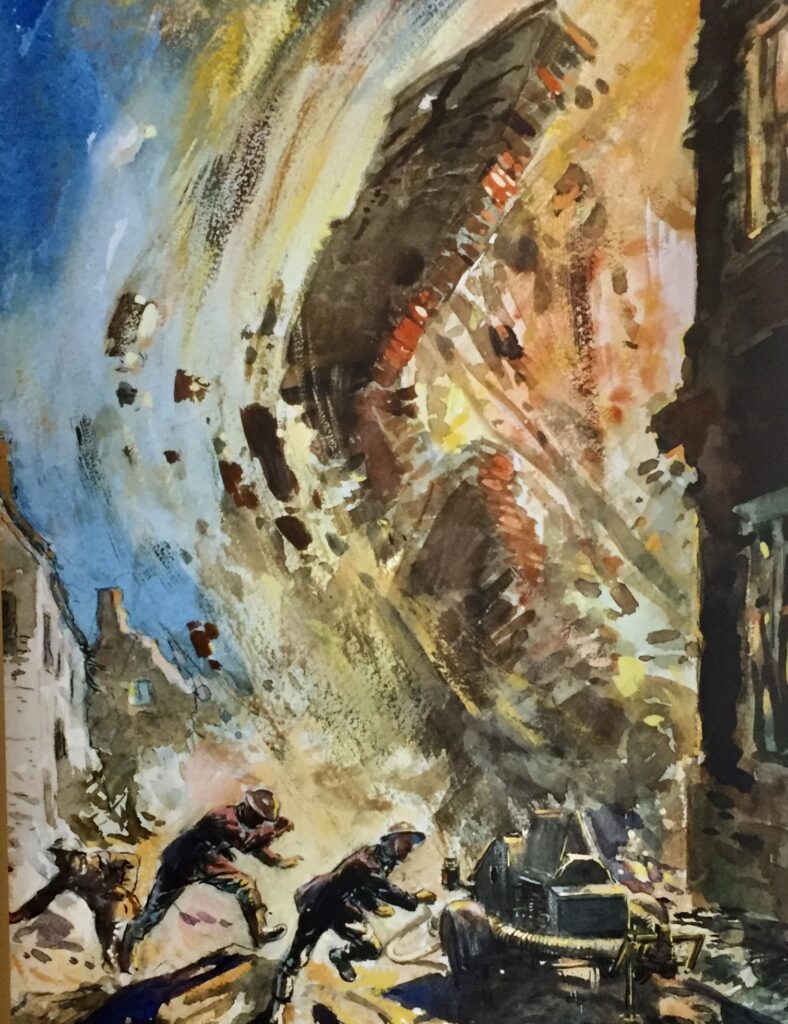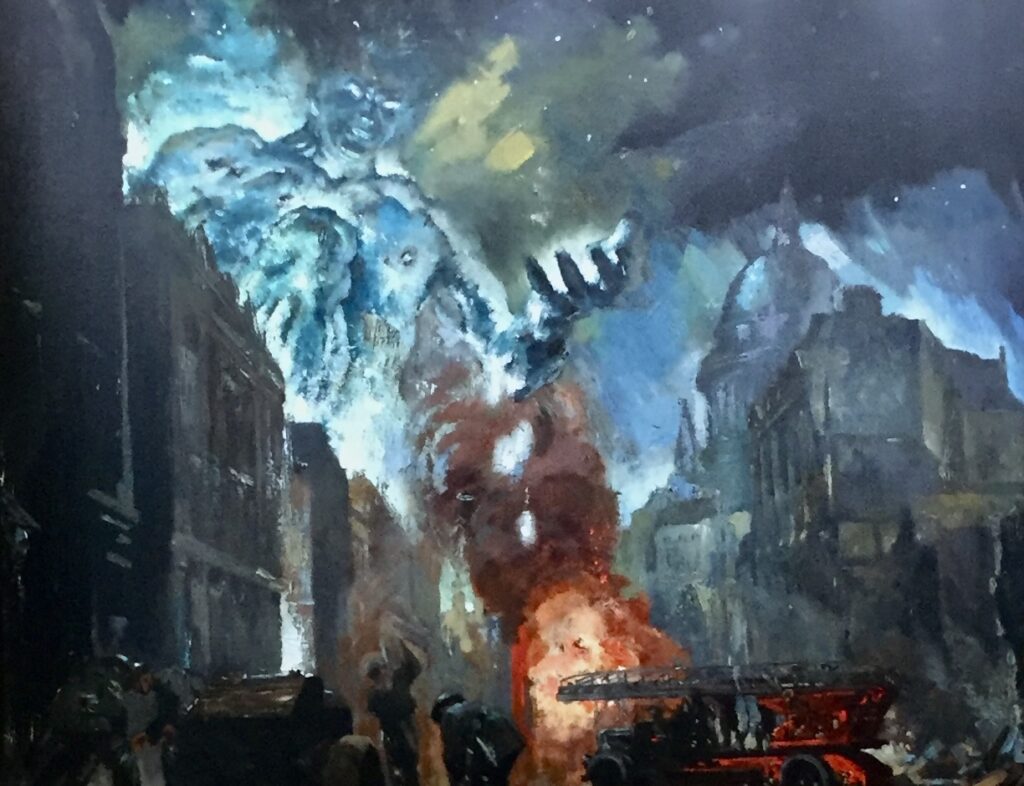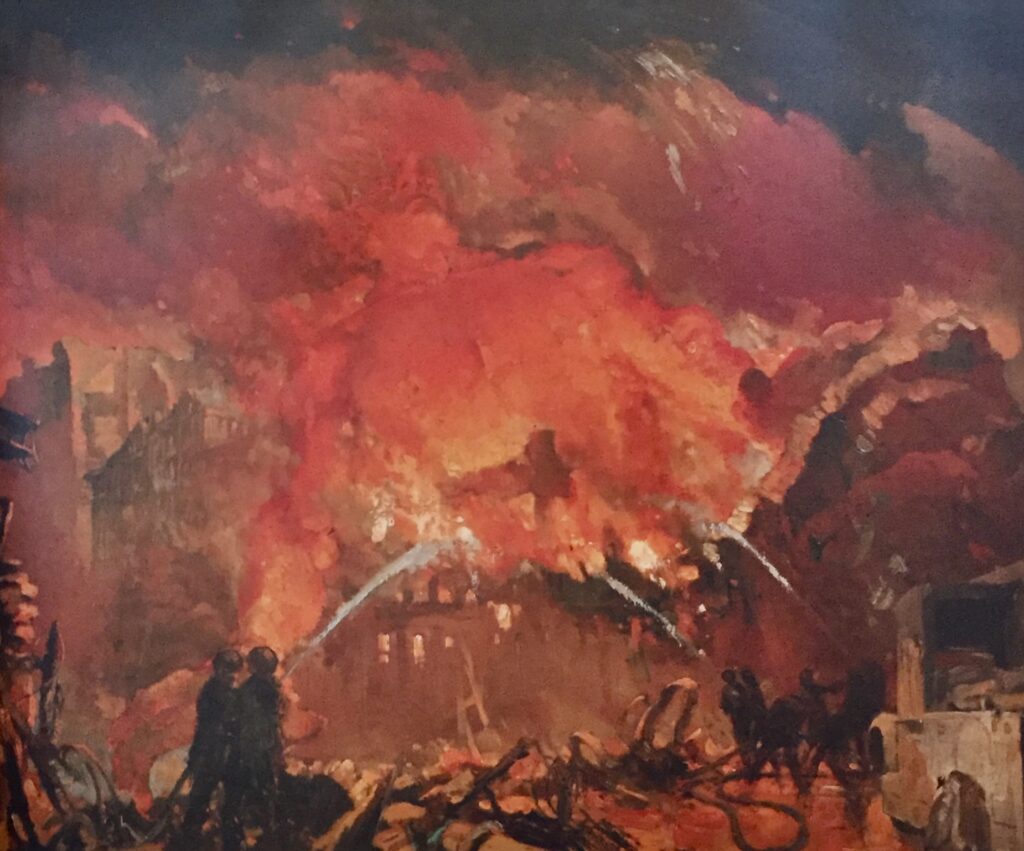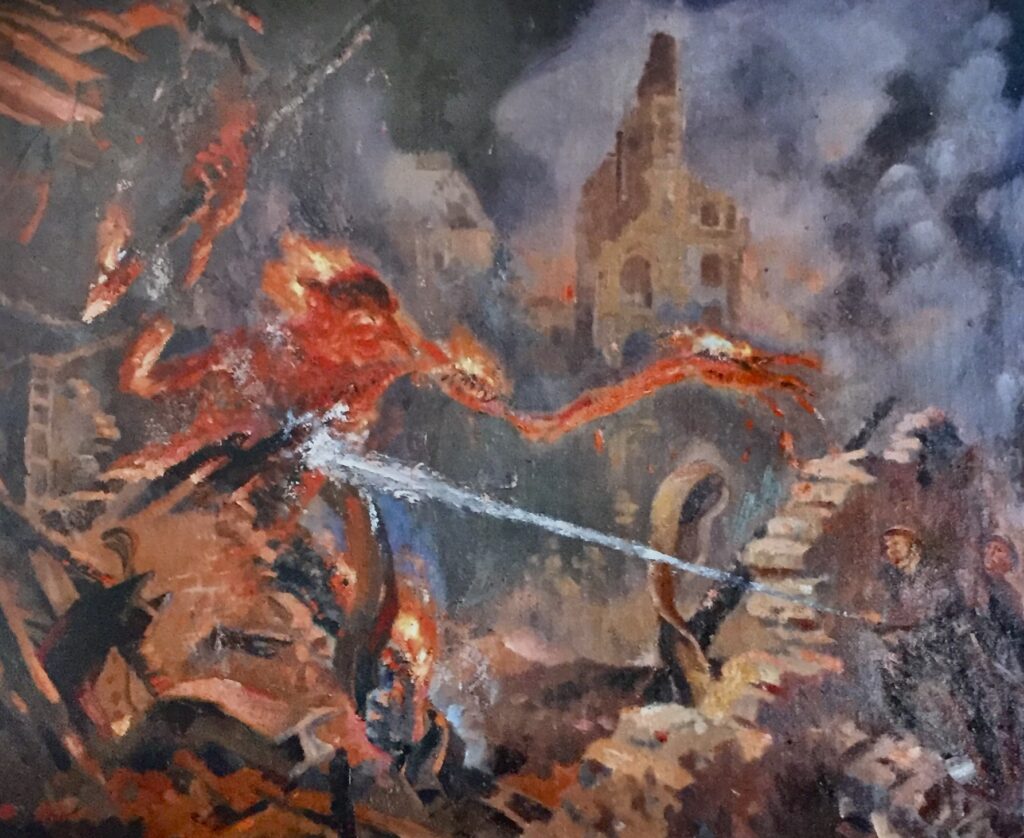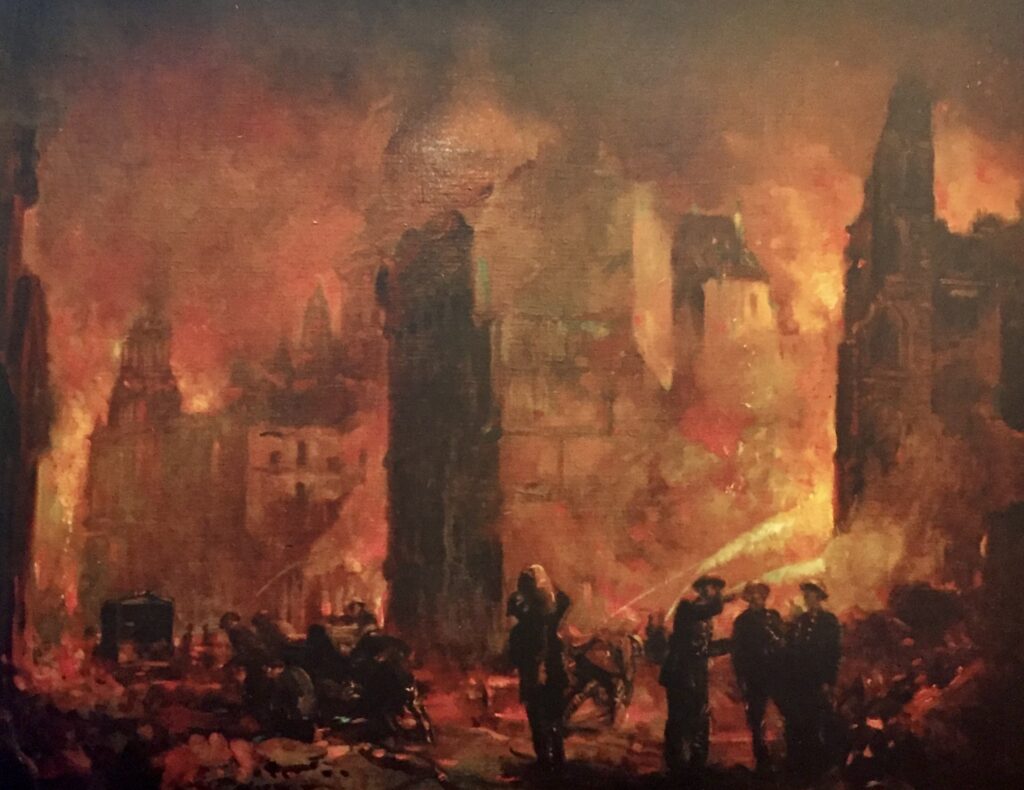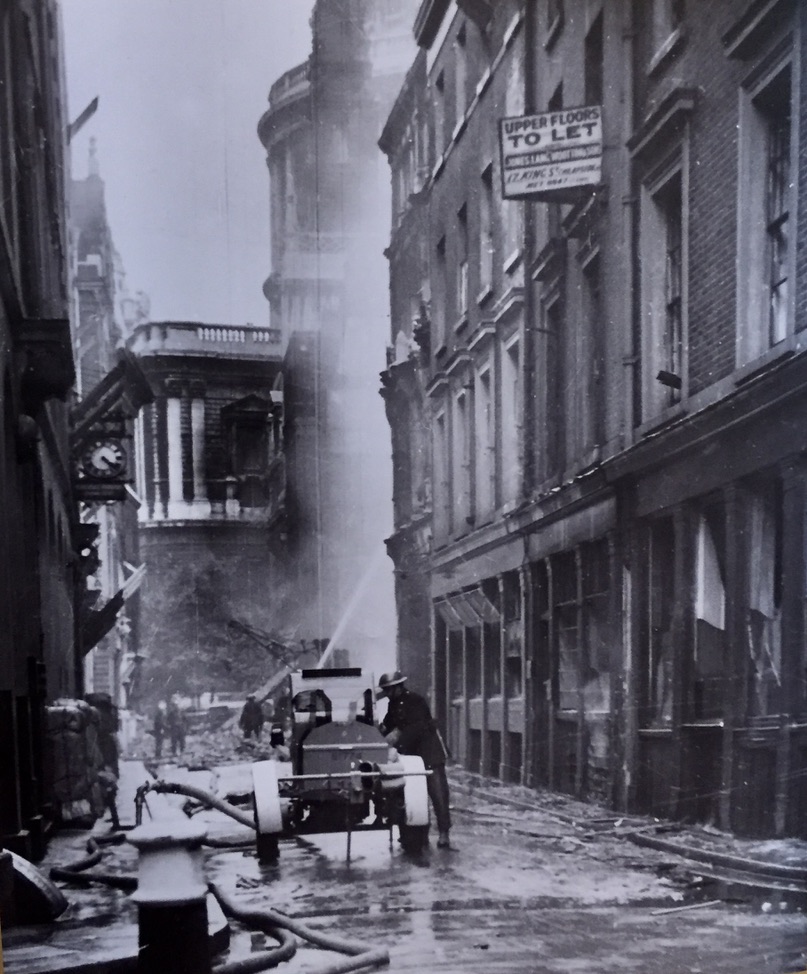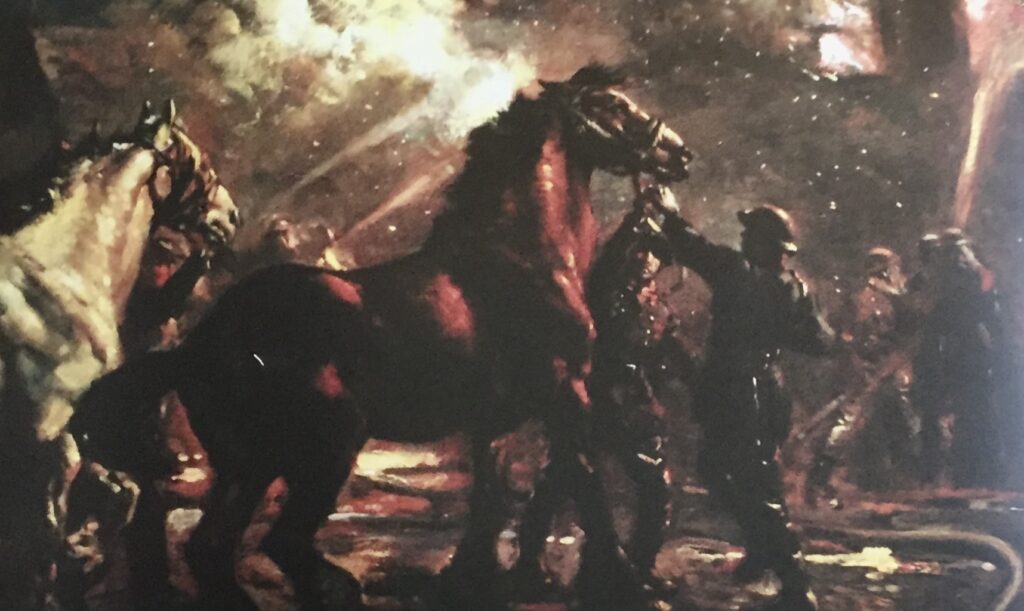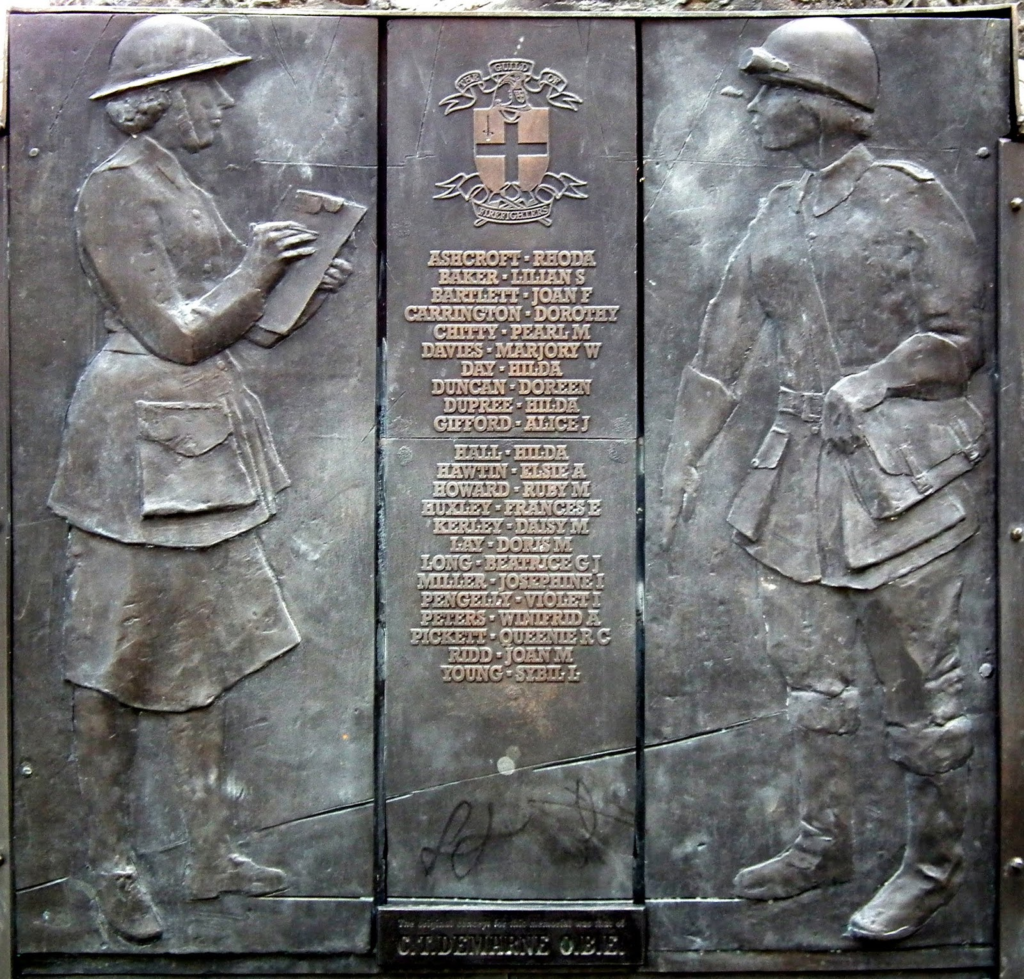Earlier this week I visited the recently opened Roman Wall exhibition in Vine Street. Entrance is free but you need to book a time slot online.
Looking down through a window near the entrance you get an excellent sense of Roman London’s street level …
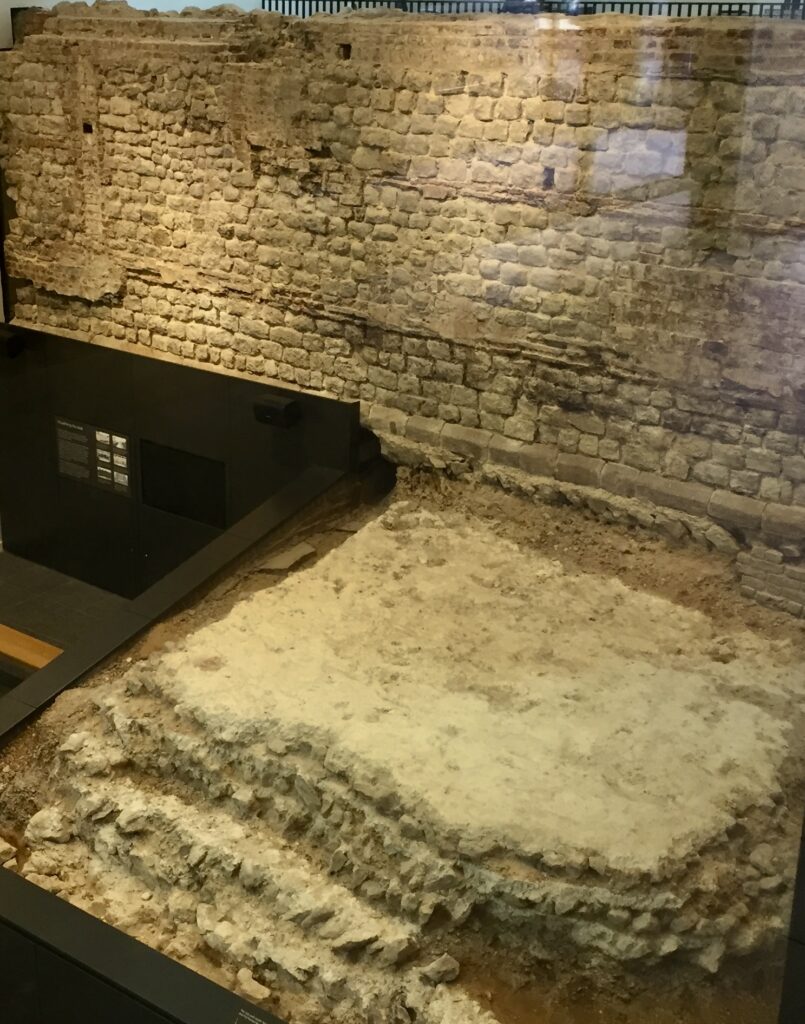
Once inside the imposing nature of the wall itself is immediatly apparent…
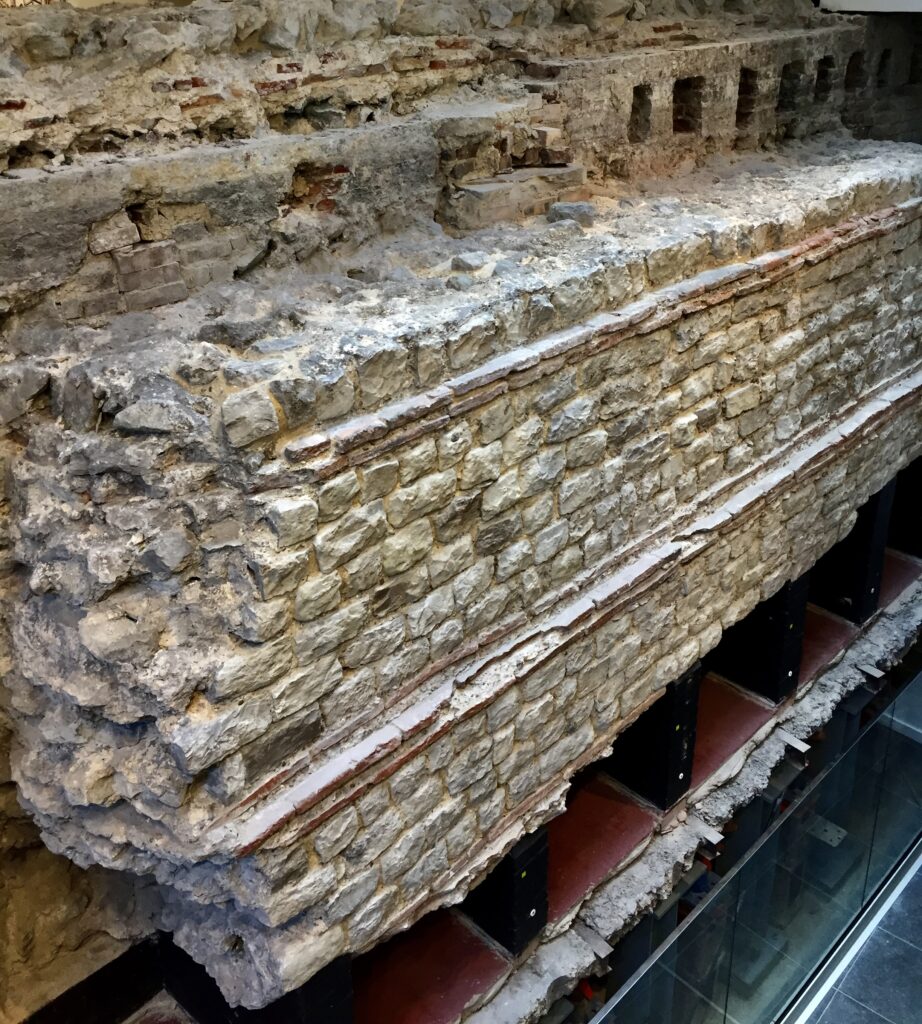
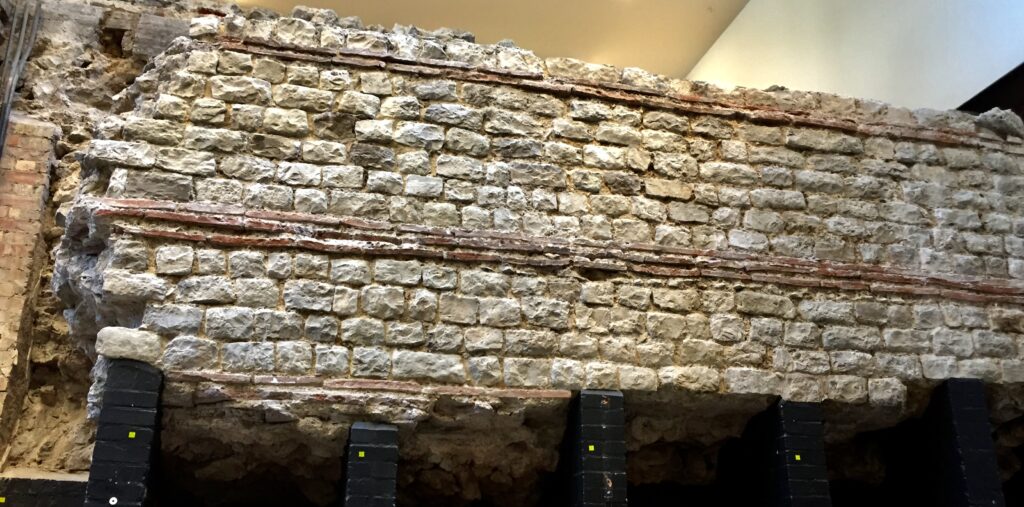
The exhibition signage is first class throughout …
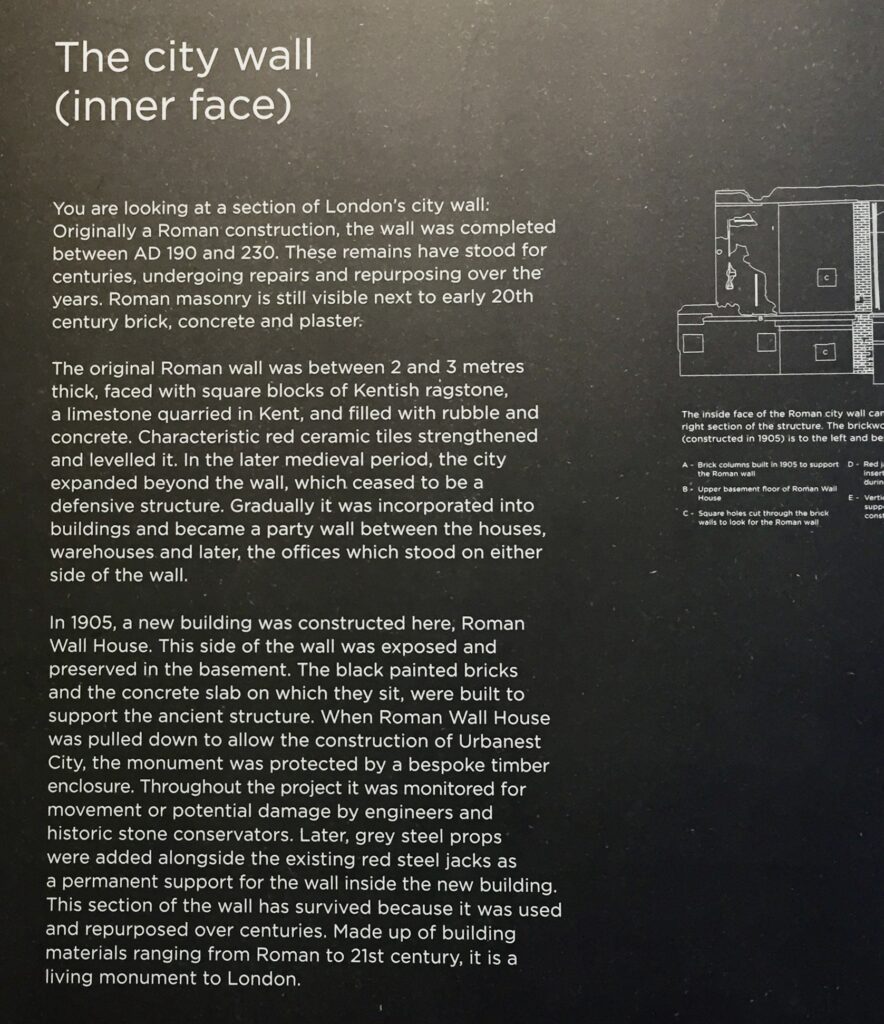
It is also complemented by Museum of London plaques …
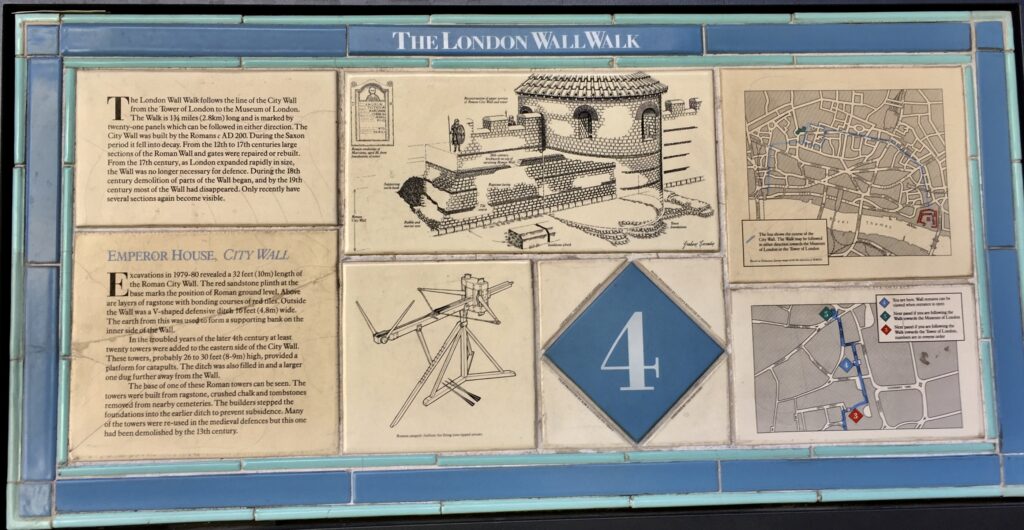
Archaeoligical finds from the site (which served as a cesspit for many years) are beautifully displayed ..
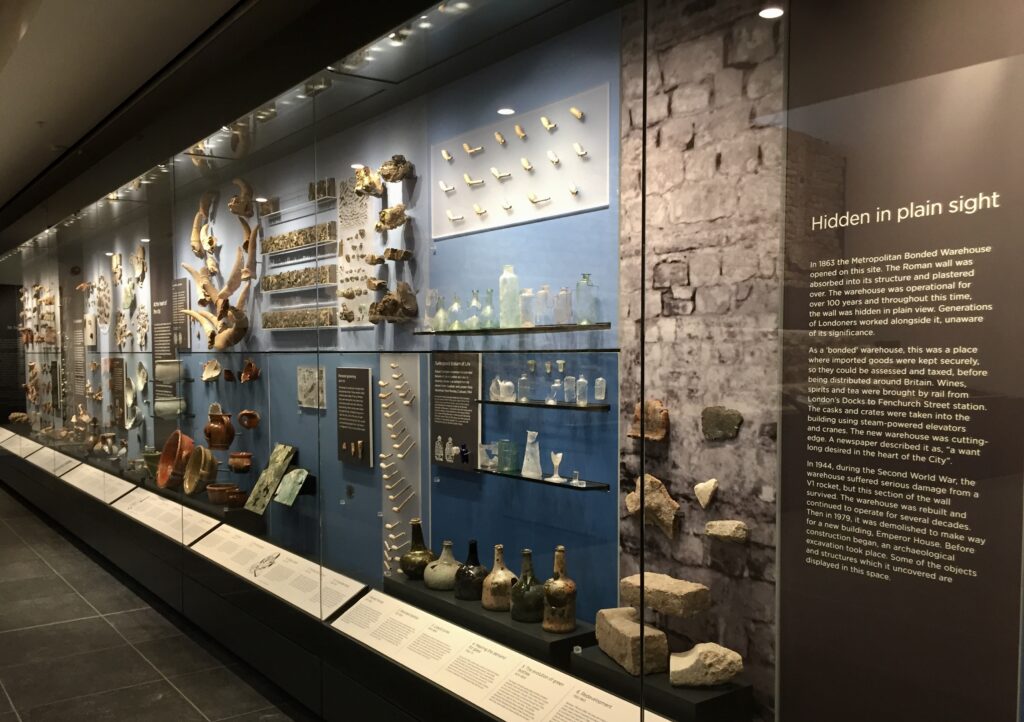
As regular readers will know, I rather like quirky stuff, and some of the finds displayed fall into that category.
The paw prints on this tile are a cat’s …
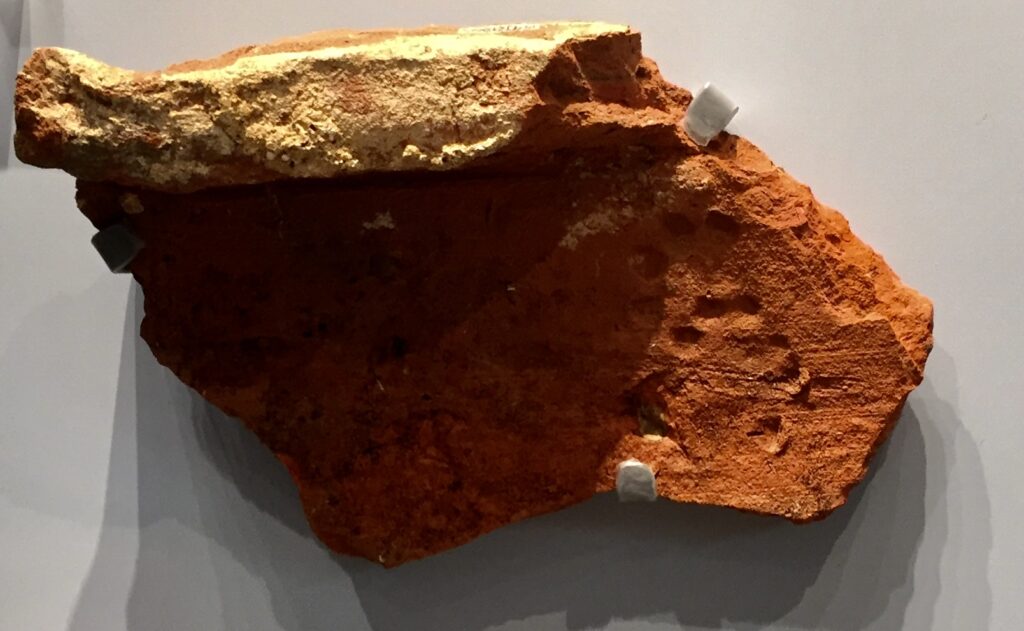
The Romans brought cats with them to Britain although there is some evidence of domesticated felines before this time. Like modern cats, they knew no boundaries. When this tile was still soft and lying on the ground of the tile yard to dry, one of our cats’ ancestors strolled casually across it, leaving its territorial mark for posterity.
This rabbit skeleton has been dated to between 1760 to 1770 …
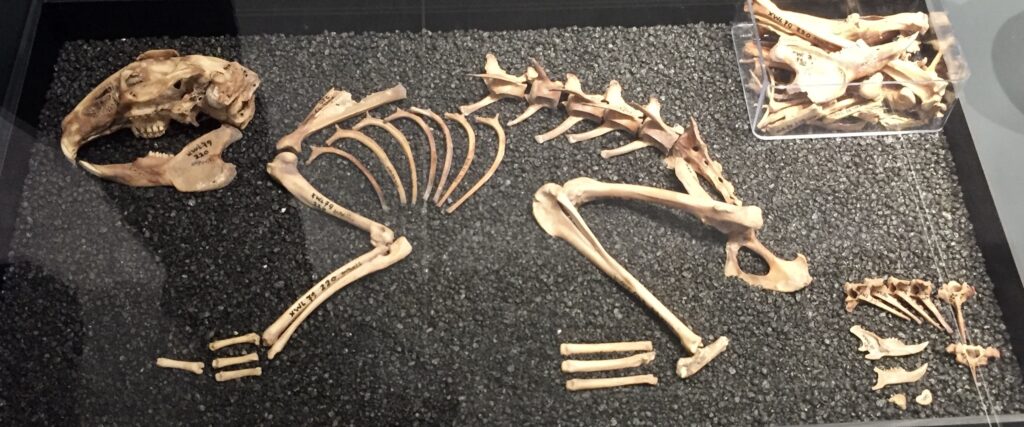
There are no visible butchery or skinning marks, so it was probably not kept for eating. It is likely that it was kept as a domestic pet, perhaps by the children of the family. Alongside it are the vertebrae and jawbones from a younger rabbit. These bunnies may have been much loved when alive. But having died, it appears that both were dropped unceremoniously into the cesspit in the backyard. Or maybe, horror of horrors, they fell in accidentally and drowned.
Of course I had to include this, a charmingly named ‘stool pan’ …
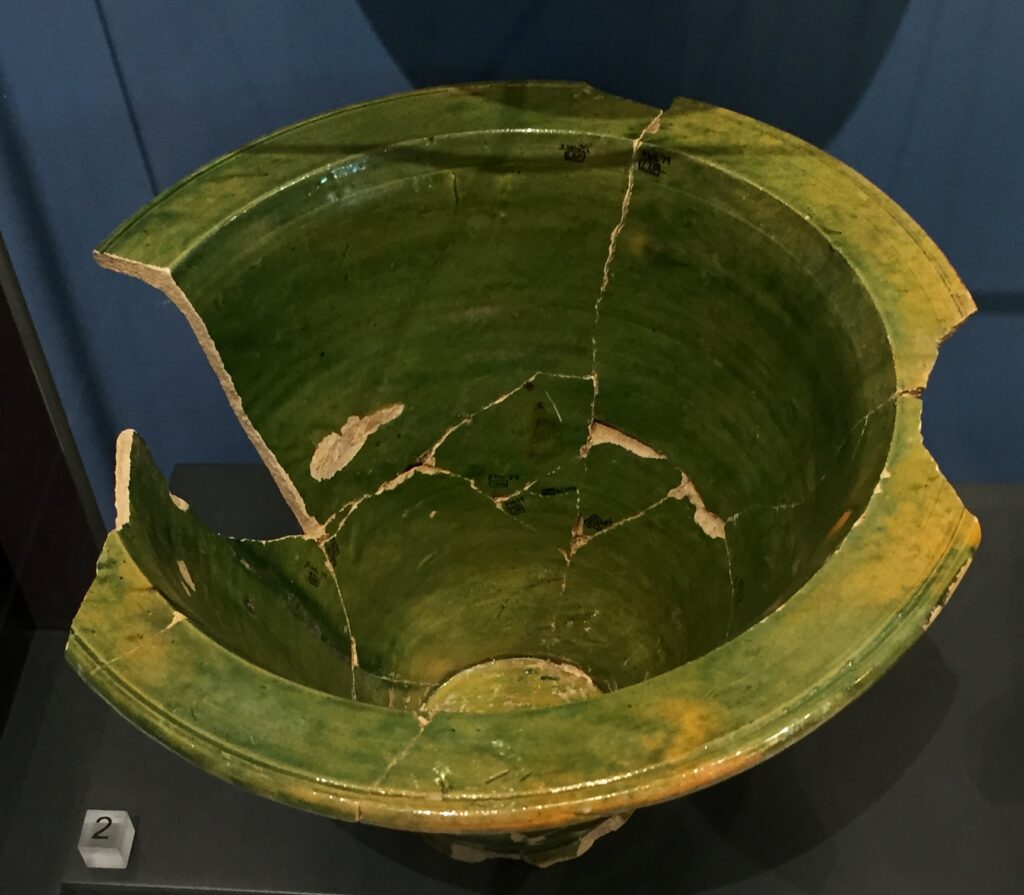
Another useful explanation …
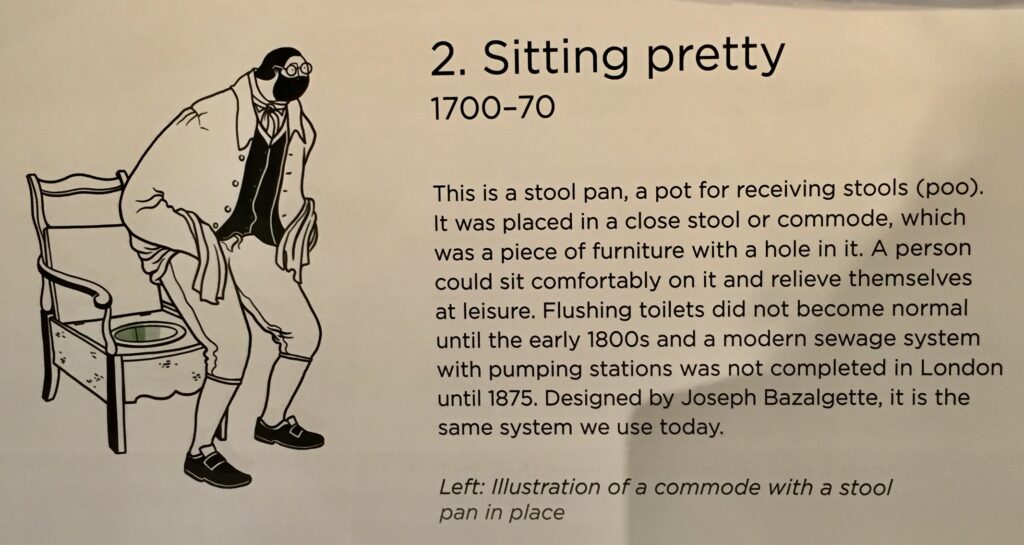
Nice to see he’s wearing a decidedly modern-looking anti-Covid mask.
How the terraced houses on the site may have looked …
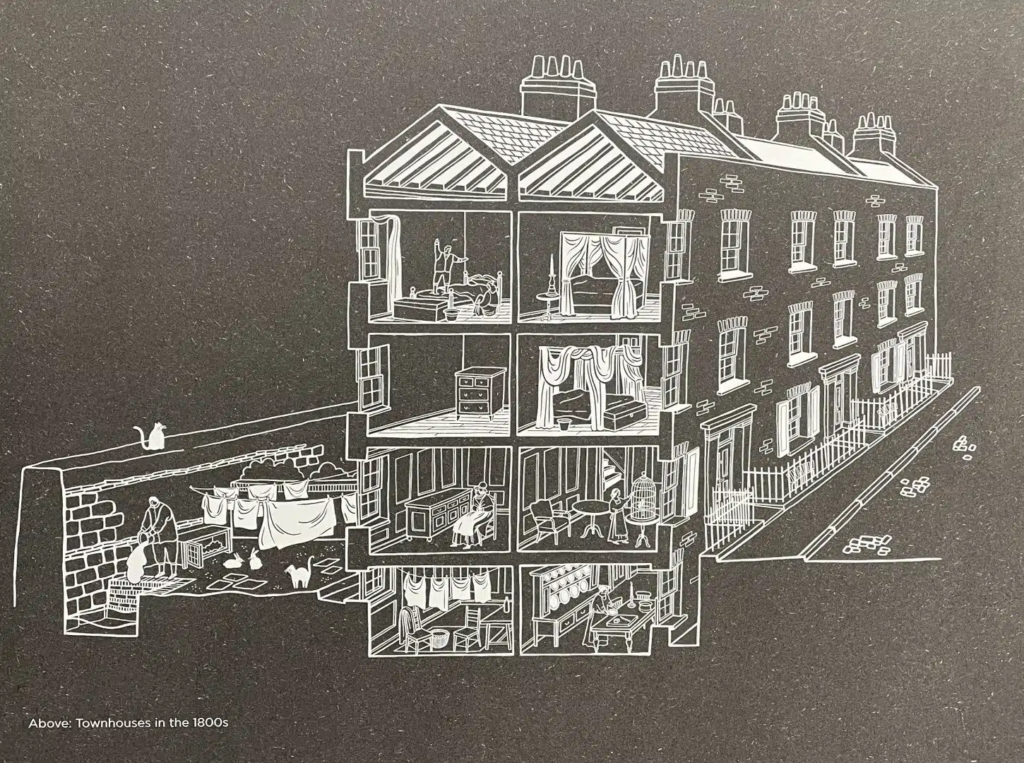
Some of the other artefacts on display include the following.
Pretty chinaware – someone must have been very unhappy when these articles were broken and had to be consigned to the rubbish pit. Or maybe they had just fallen out of fashion and were discarded …
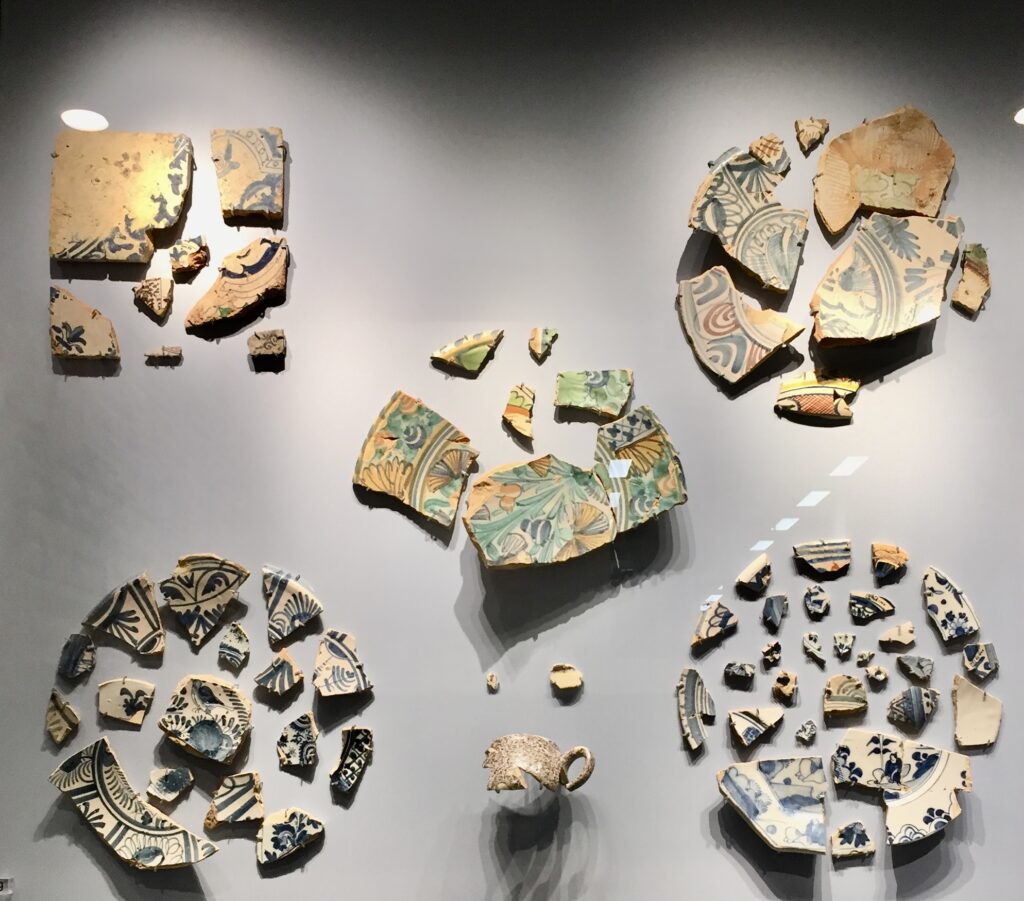
Clay pipes galore …
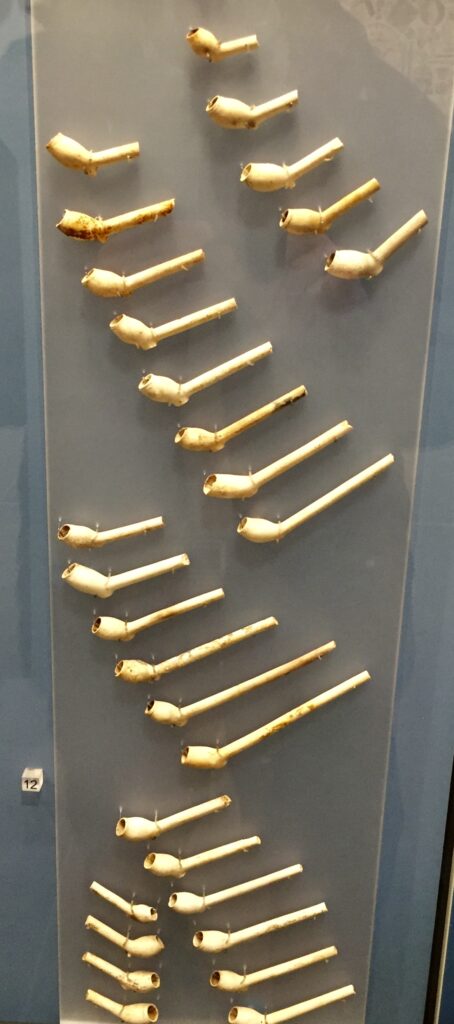
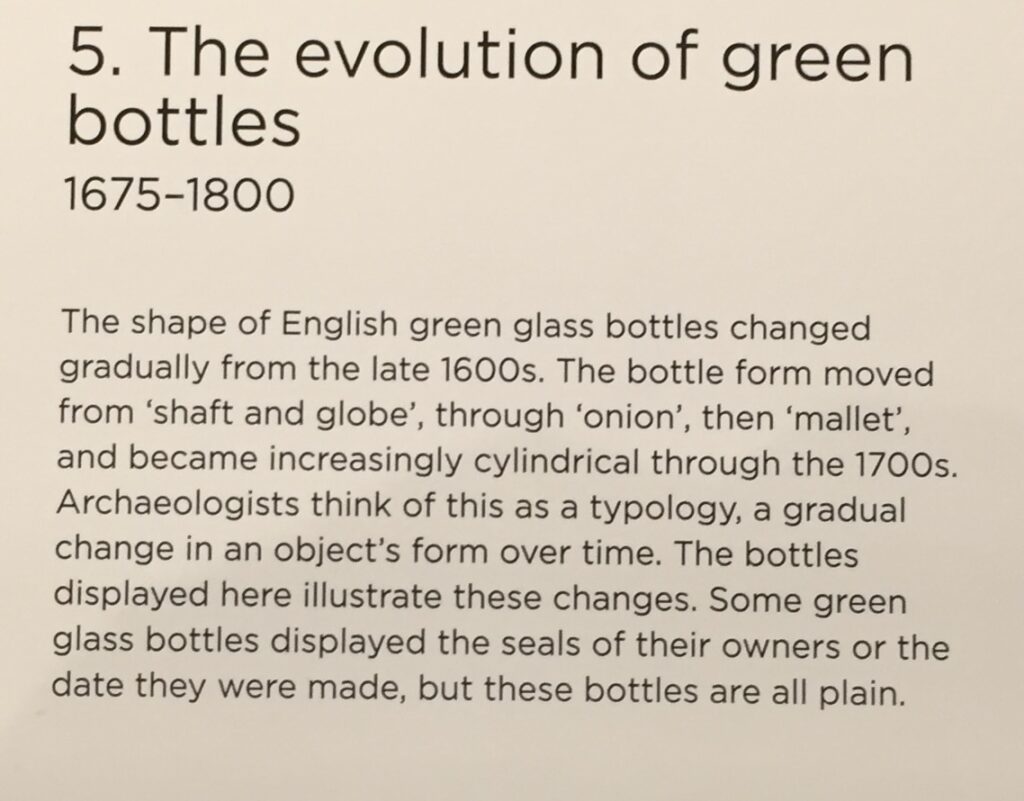

A familiar brand …

Lots to see, very well displayed and explained …
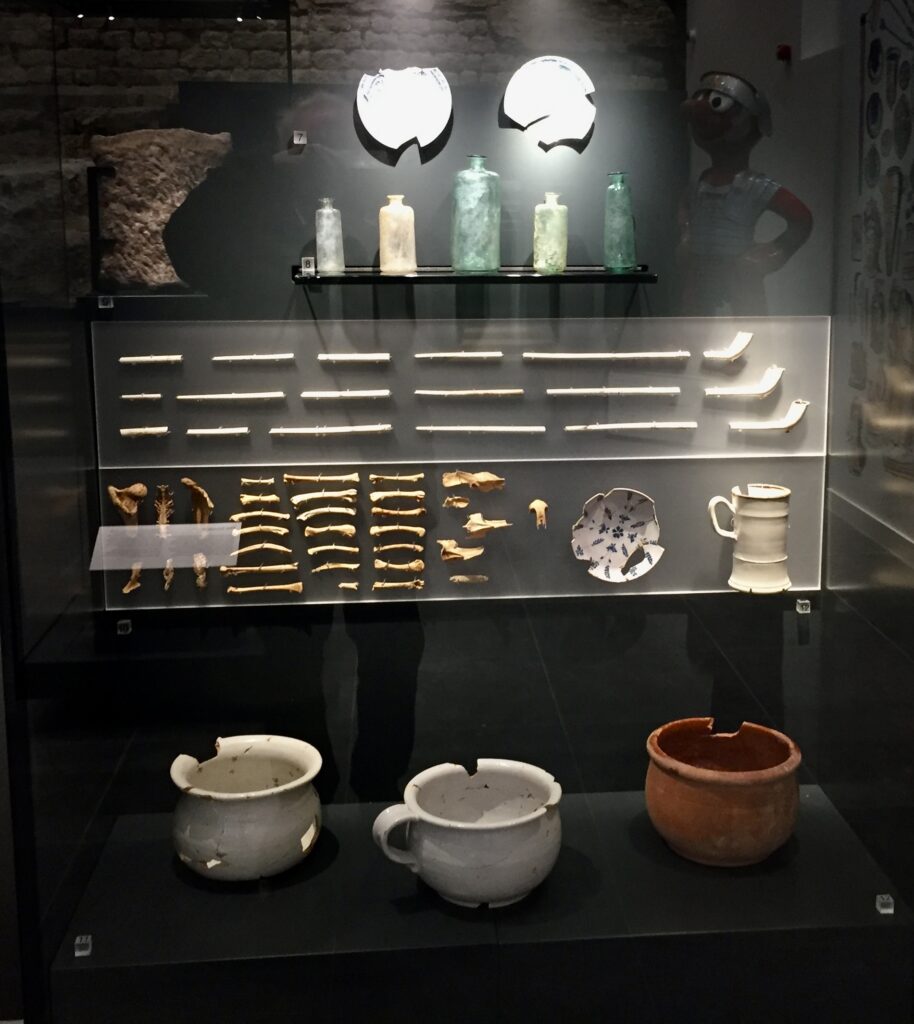
As you leave you get a fine view of the outer face of the wall …
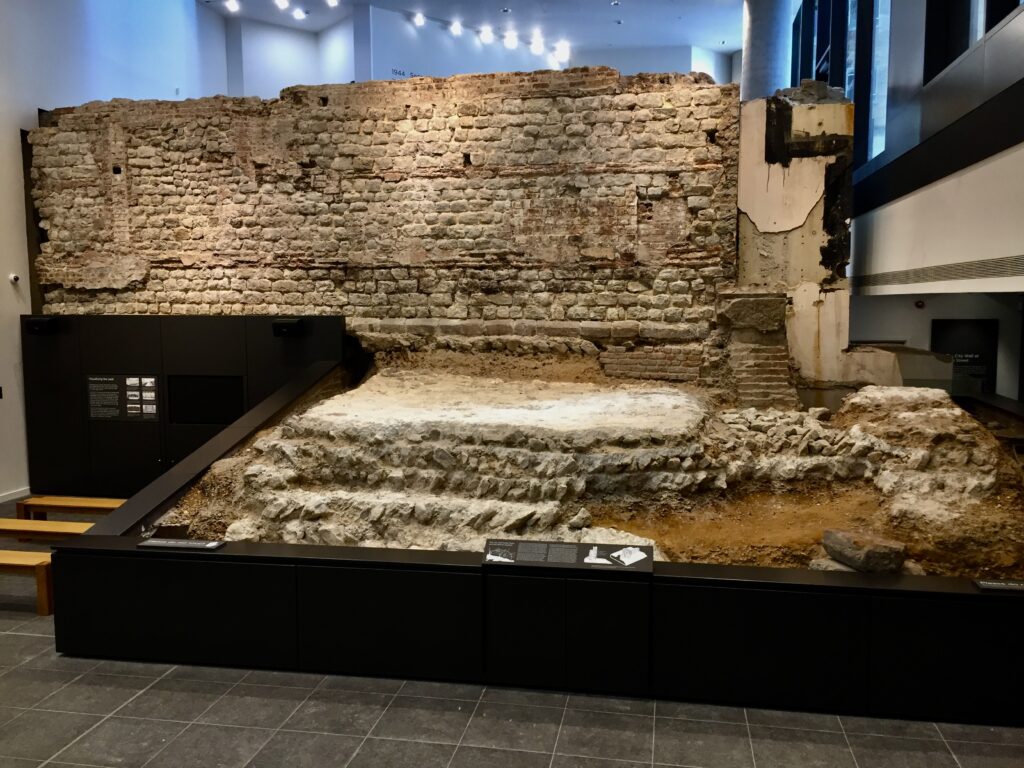
The last thing to admire is the artwork by Olivia Whitworth, the East London-based artist who creates wonderfully detailed illustrations …
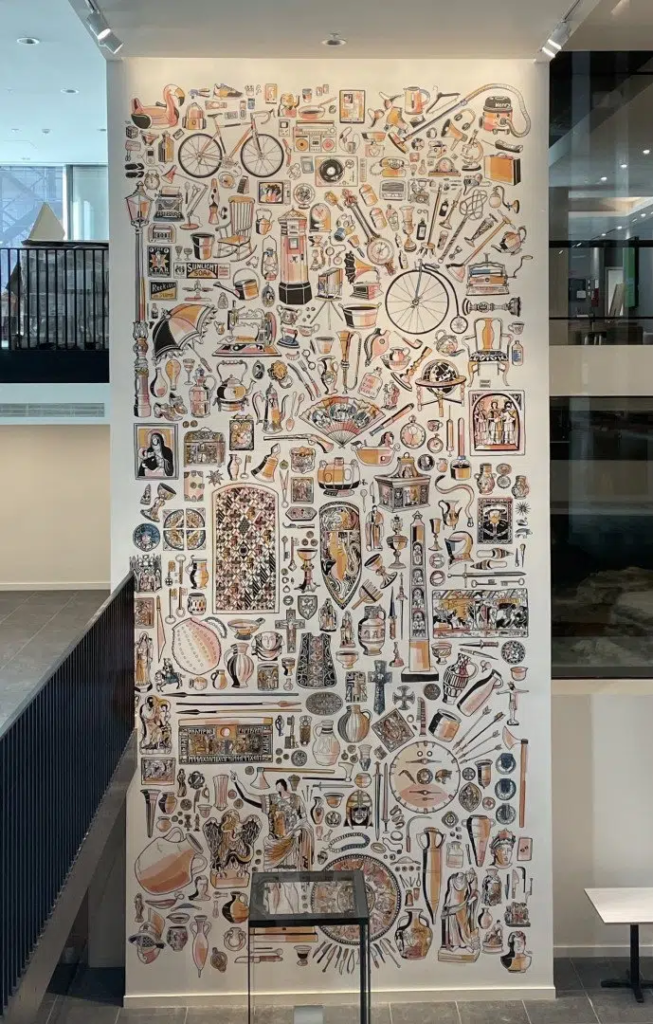
If you are in ‘London Wall mode’, don’t forget there are two other wonderful examples nearby.
Just five minutes’ walk away at Cooper’s Row, round the back of a hotel, is an equally spectacular stretch of wall that is off the tourist trail. Here you can see the marks of former staircases and medieval windows cut through to create a rugged monument of significant height …
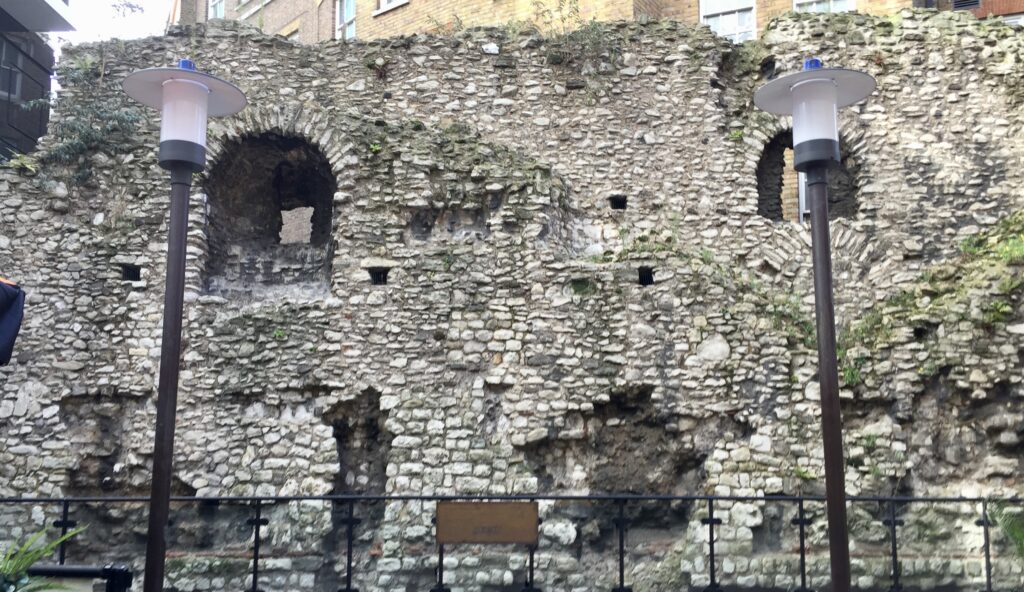
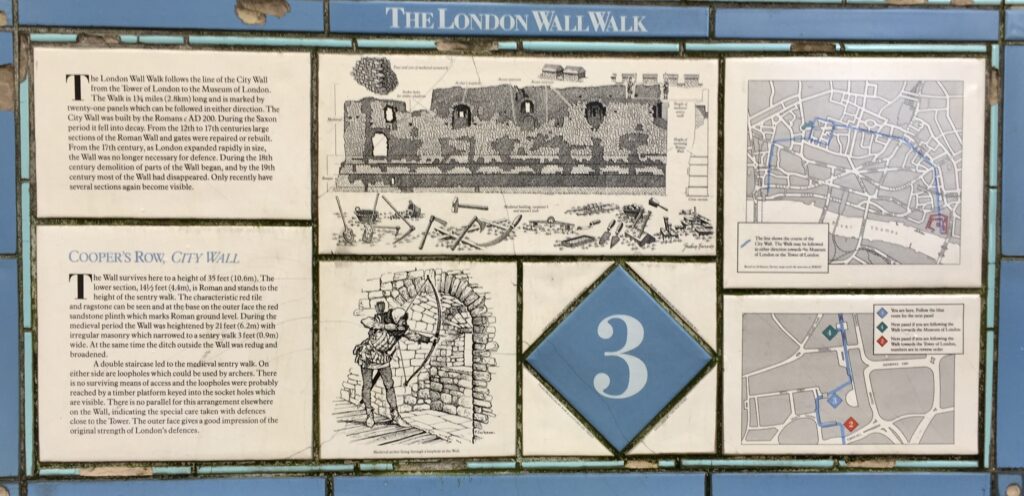
Also, alongside Tower Hill Underground Station, the Roman Emperor Trajan stands in front of another magnificent section …
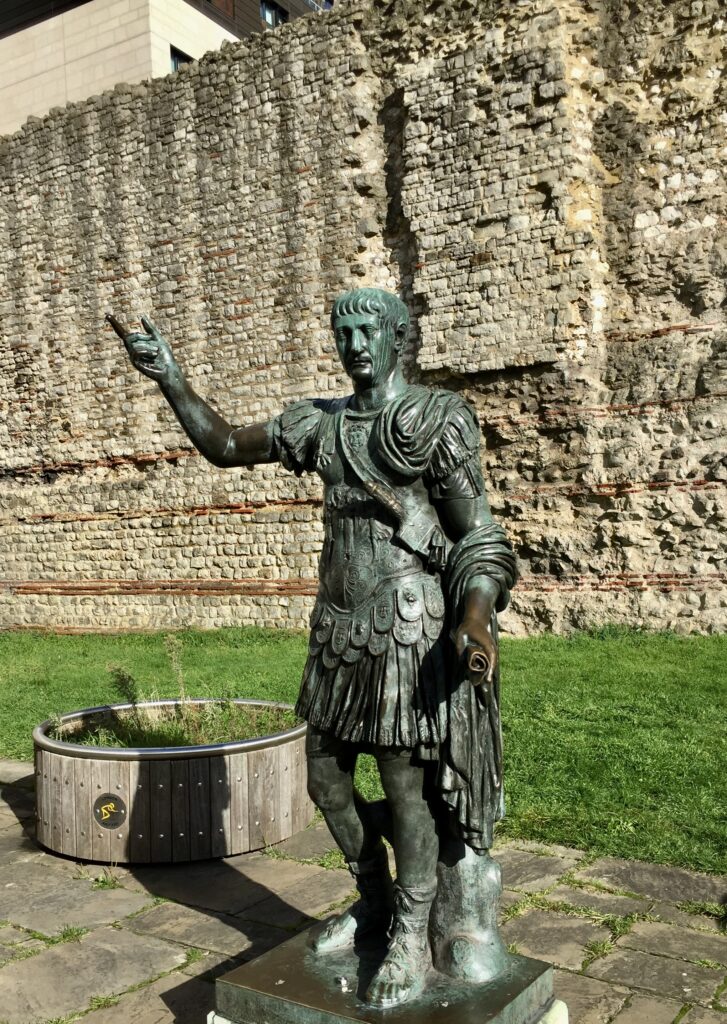
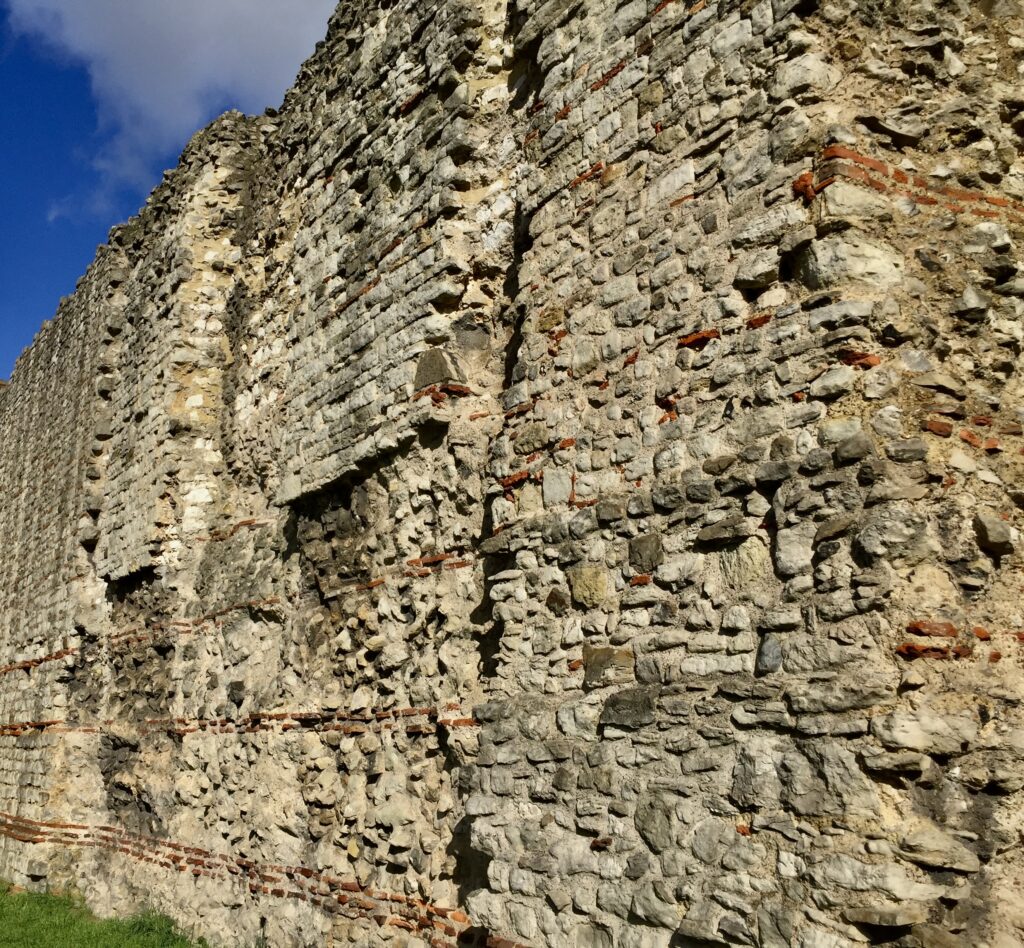
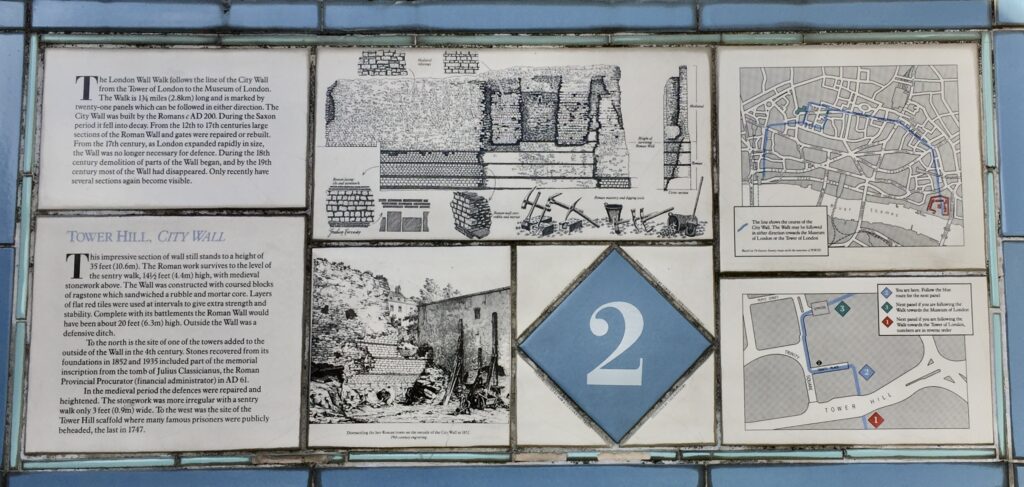
If you would like to follow me on Instagram here is the link …

